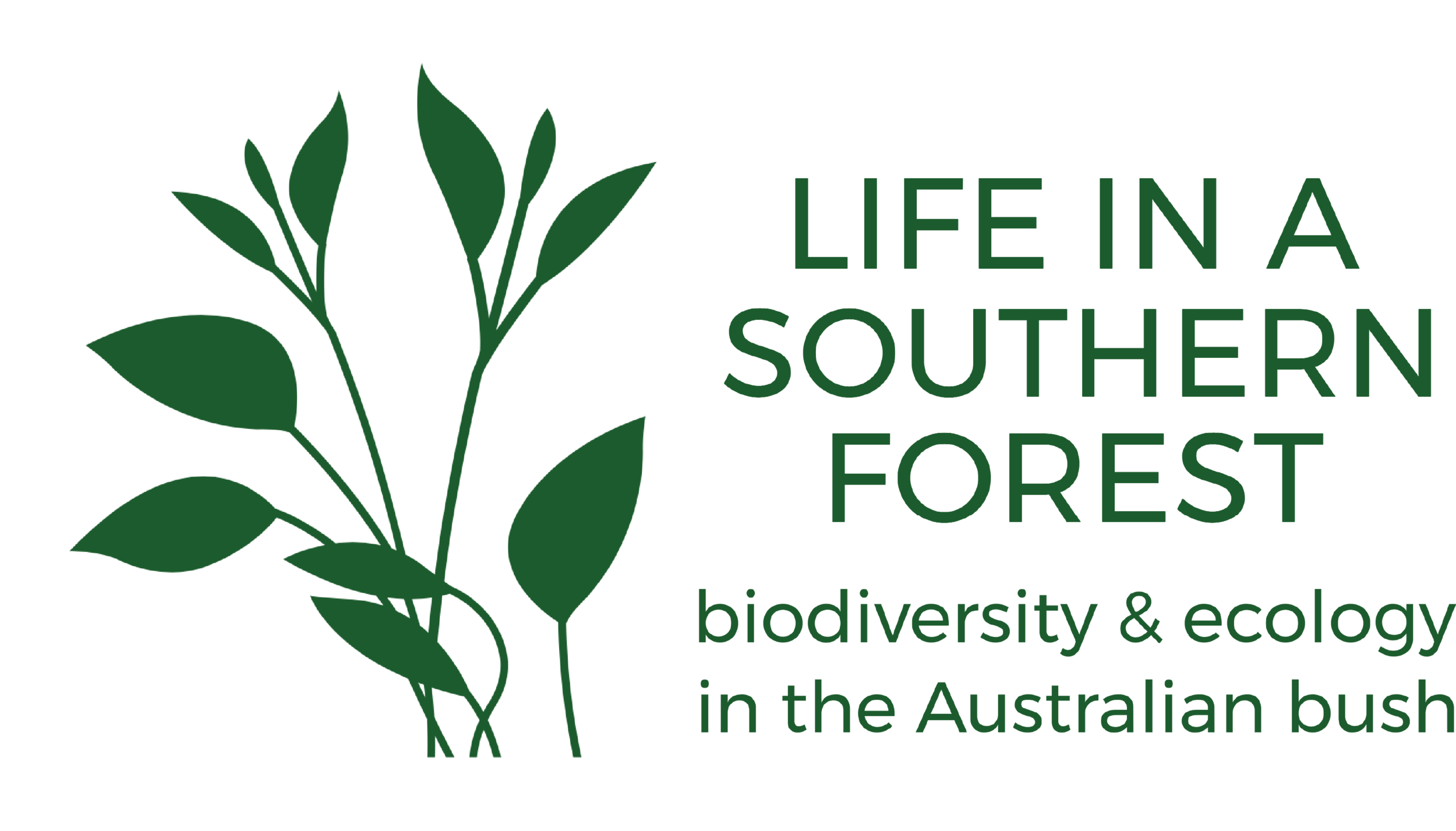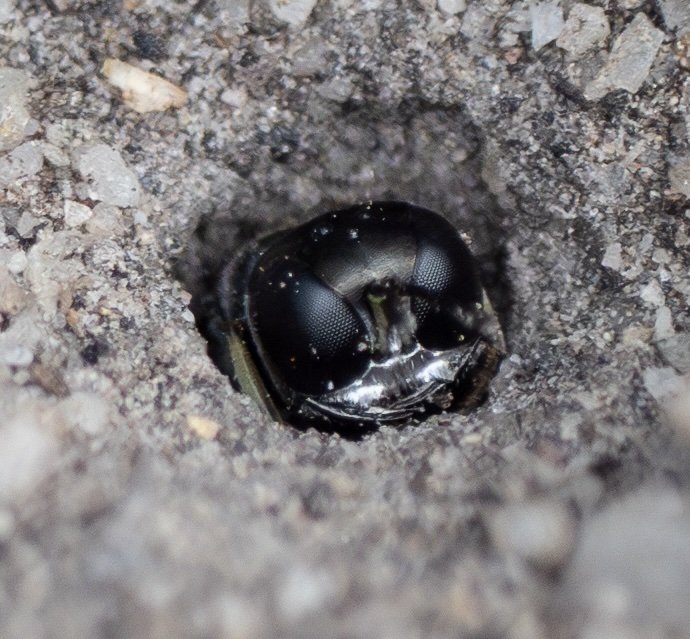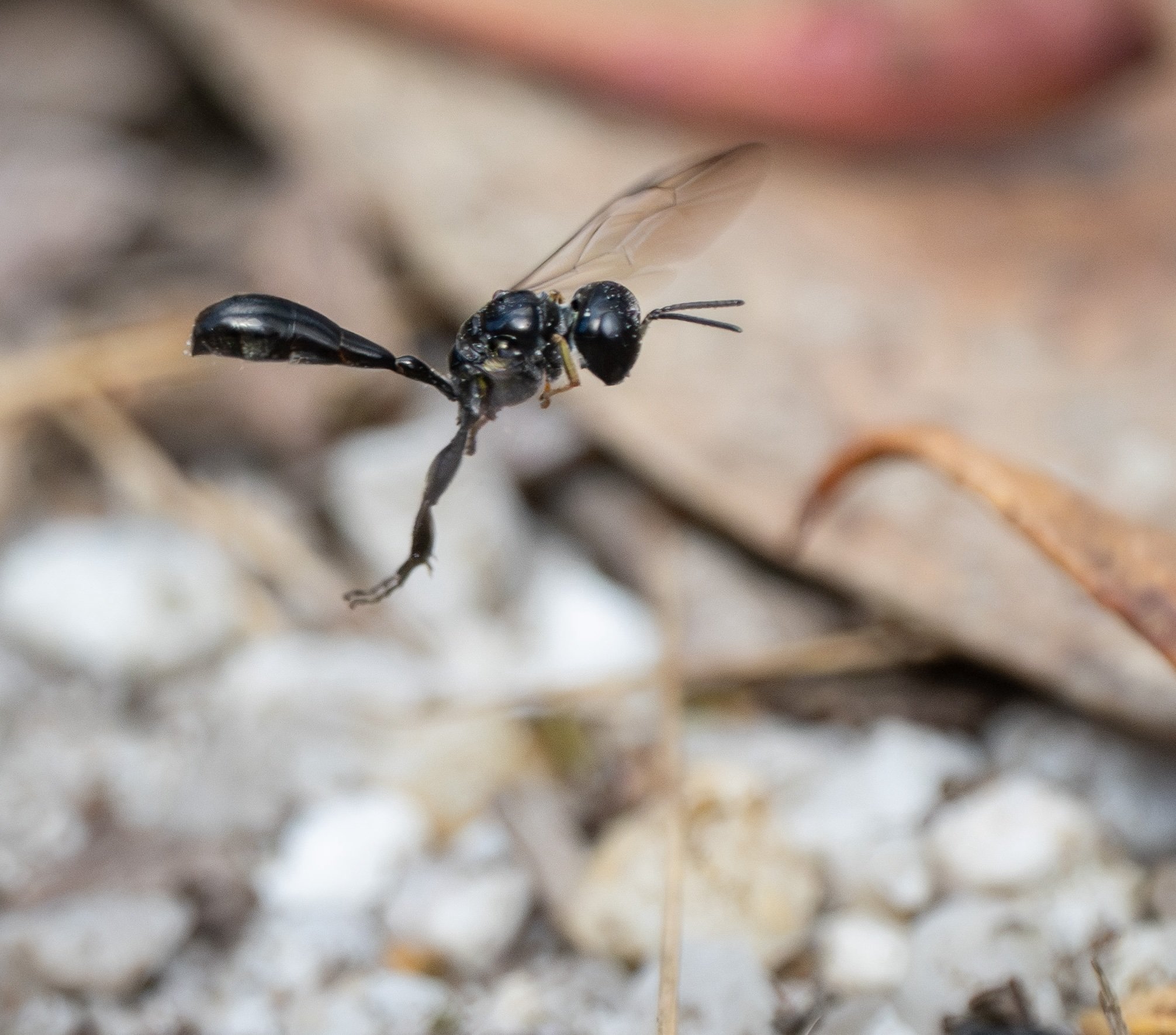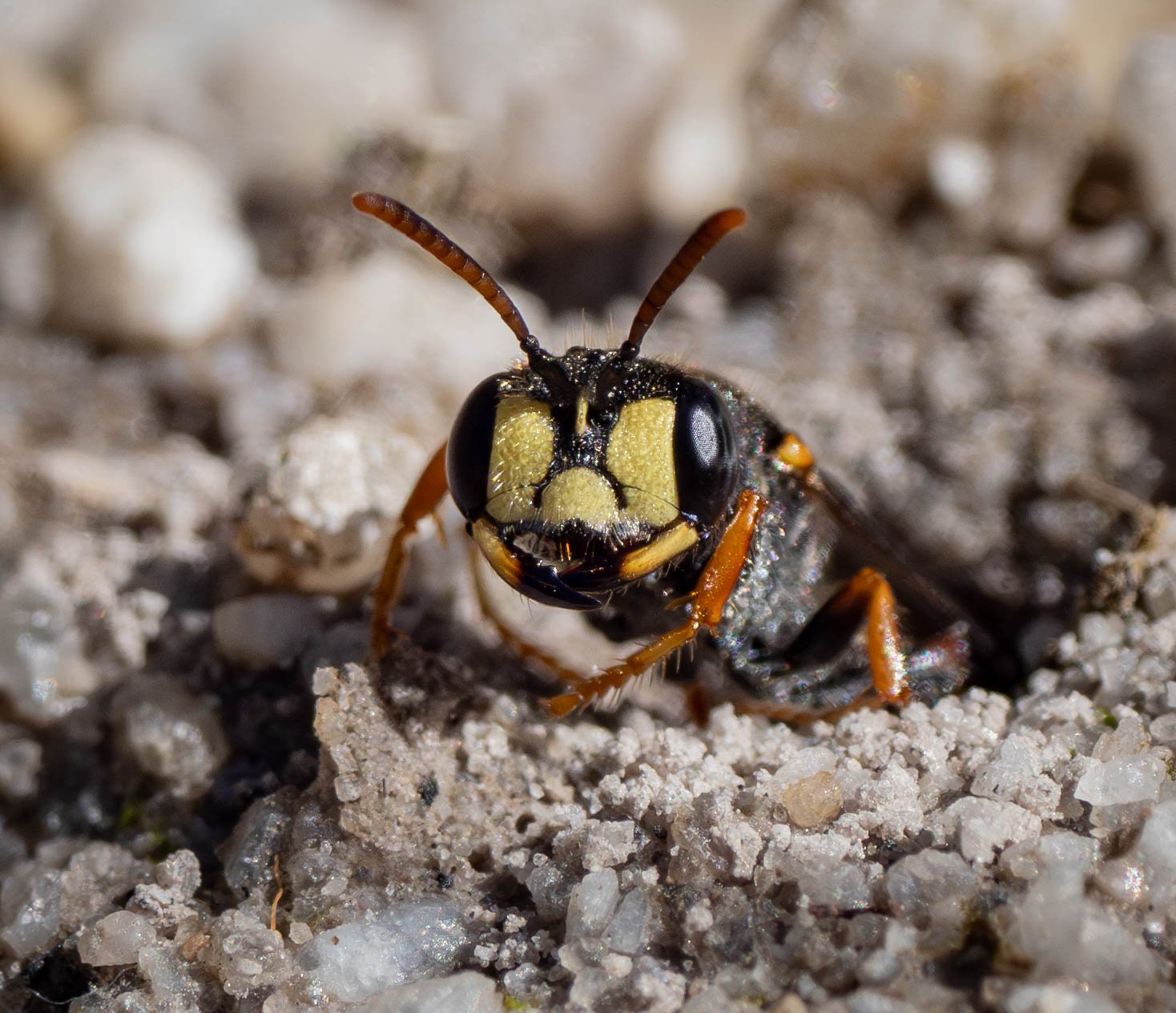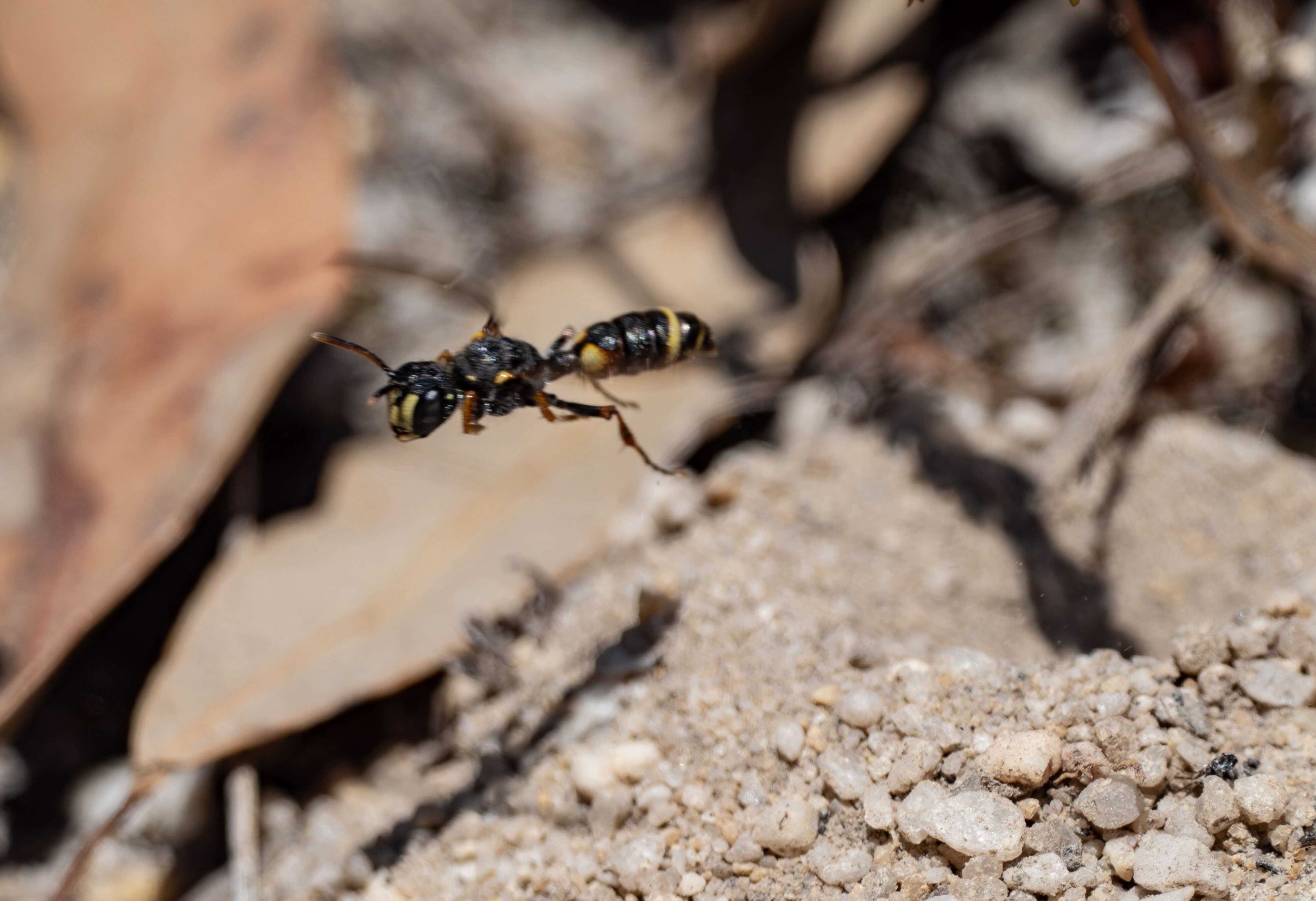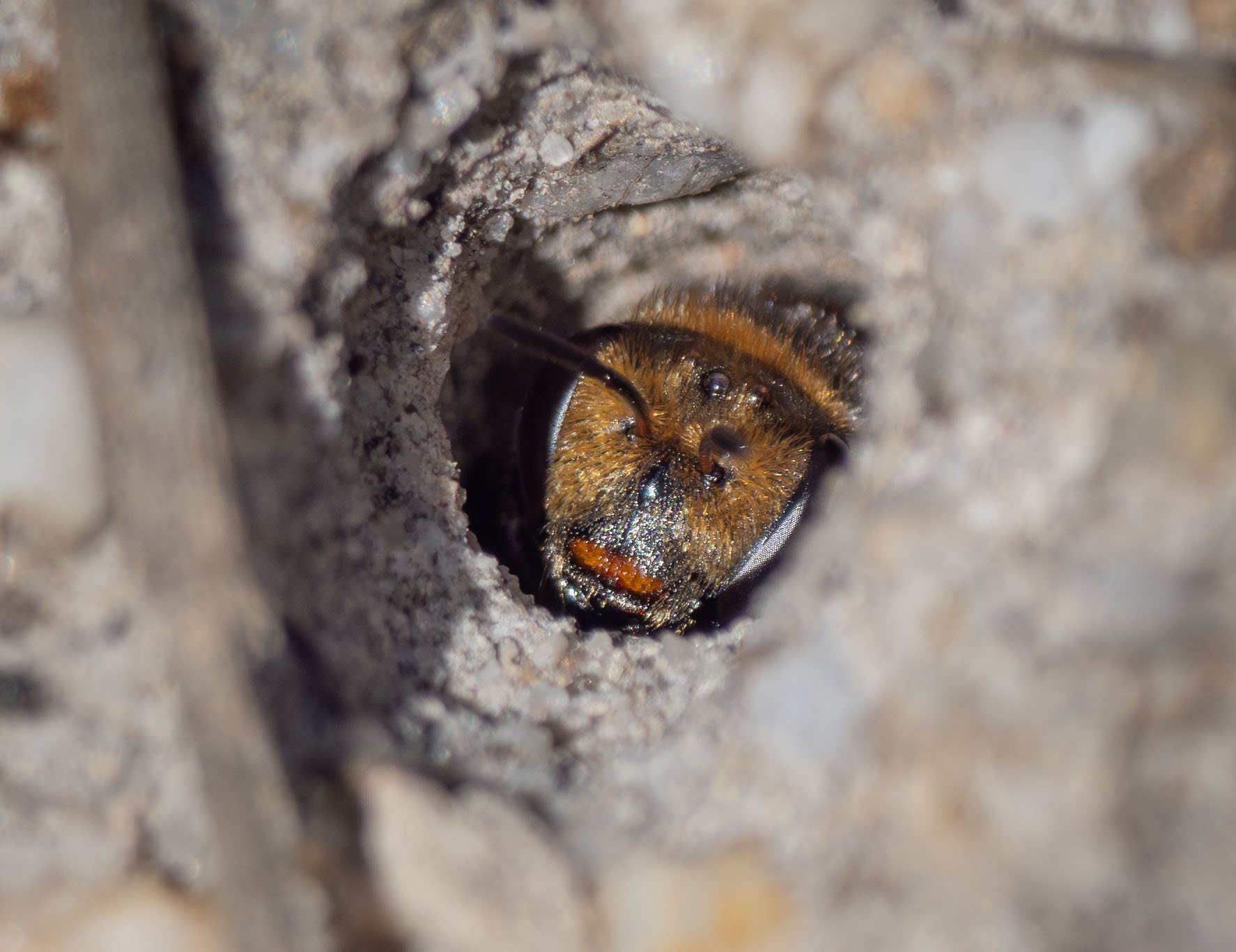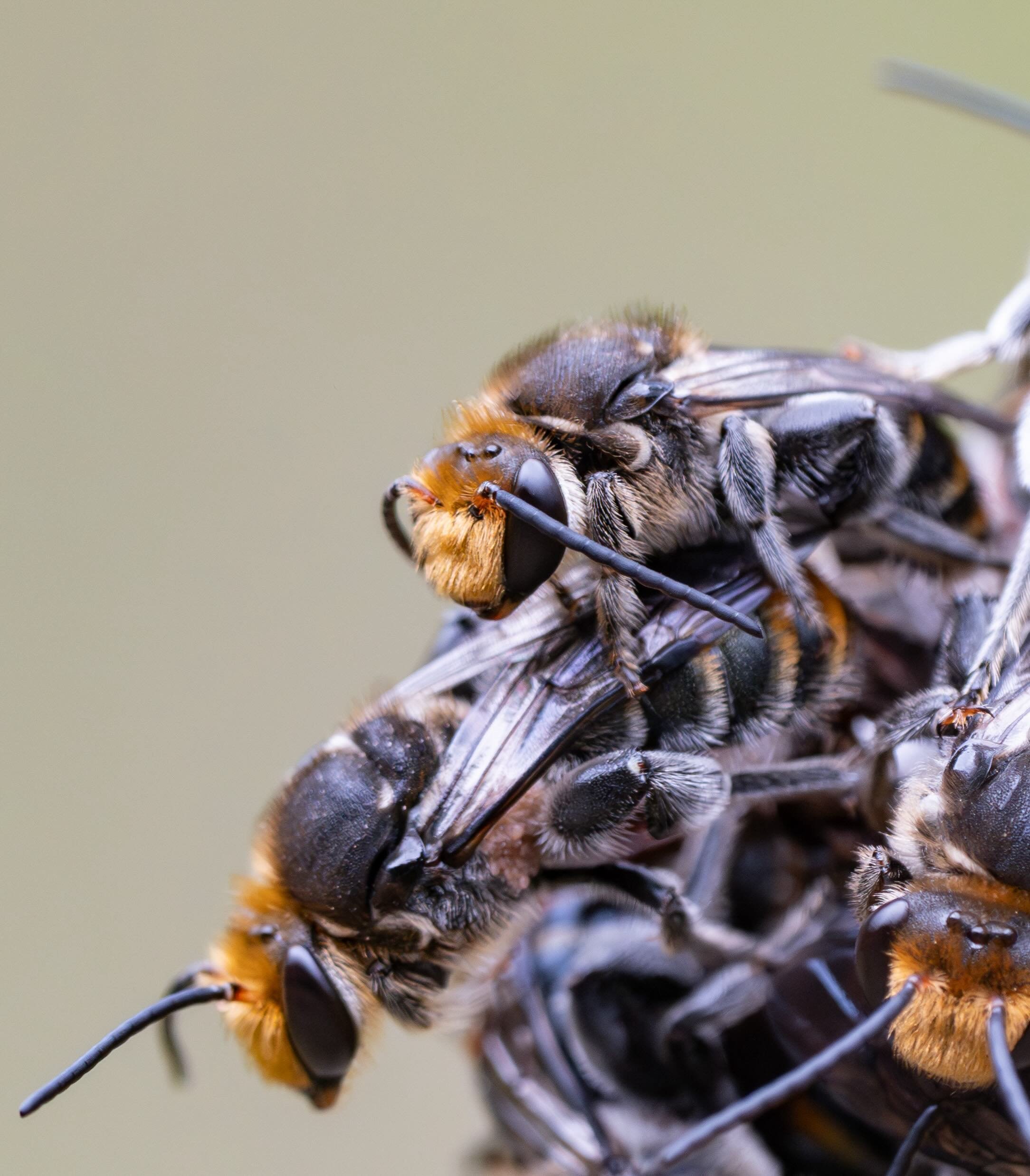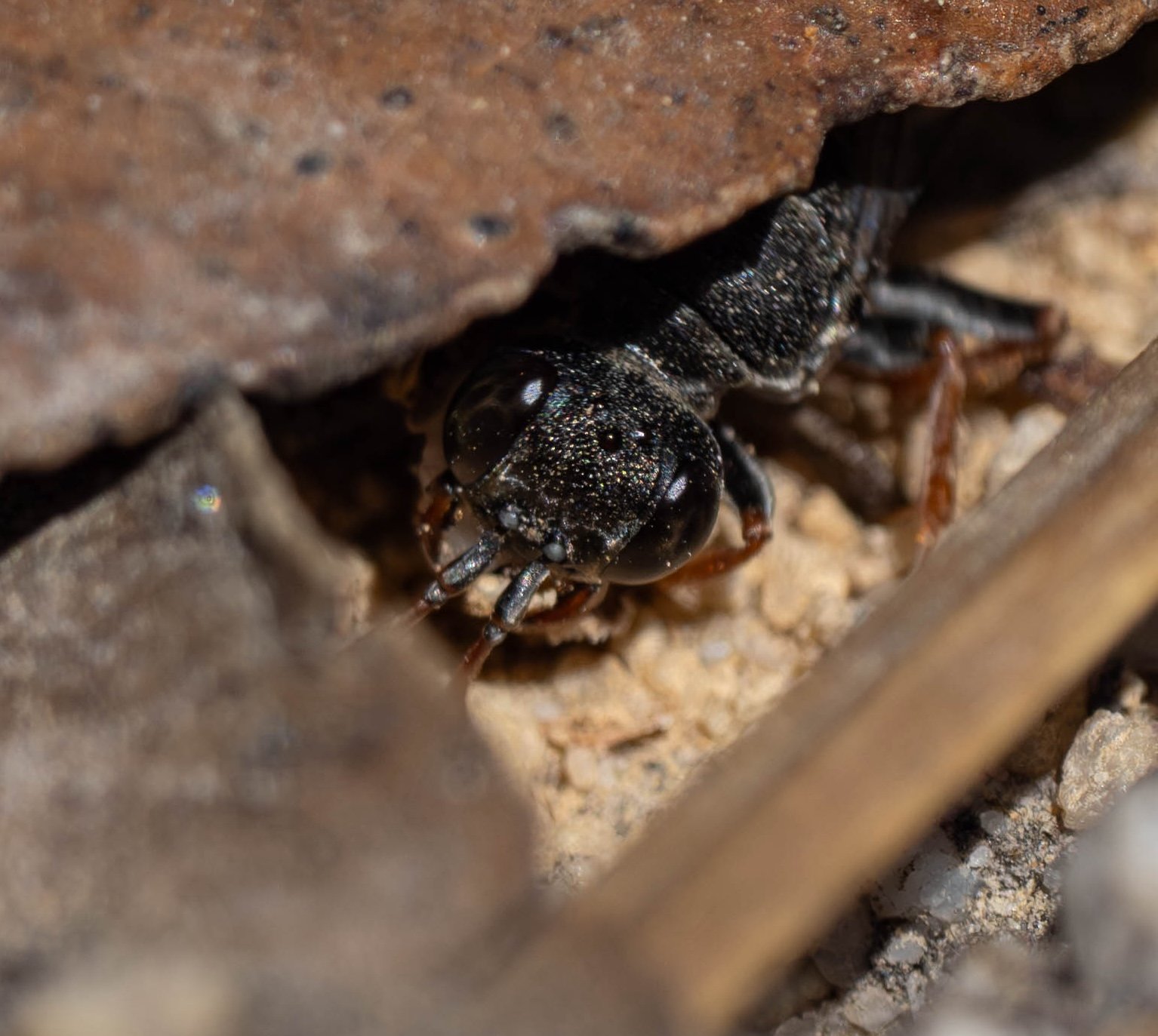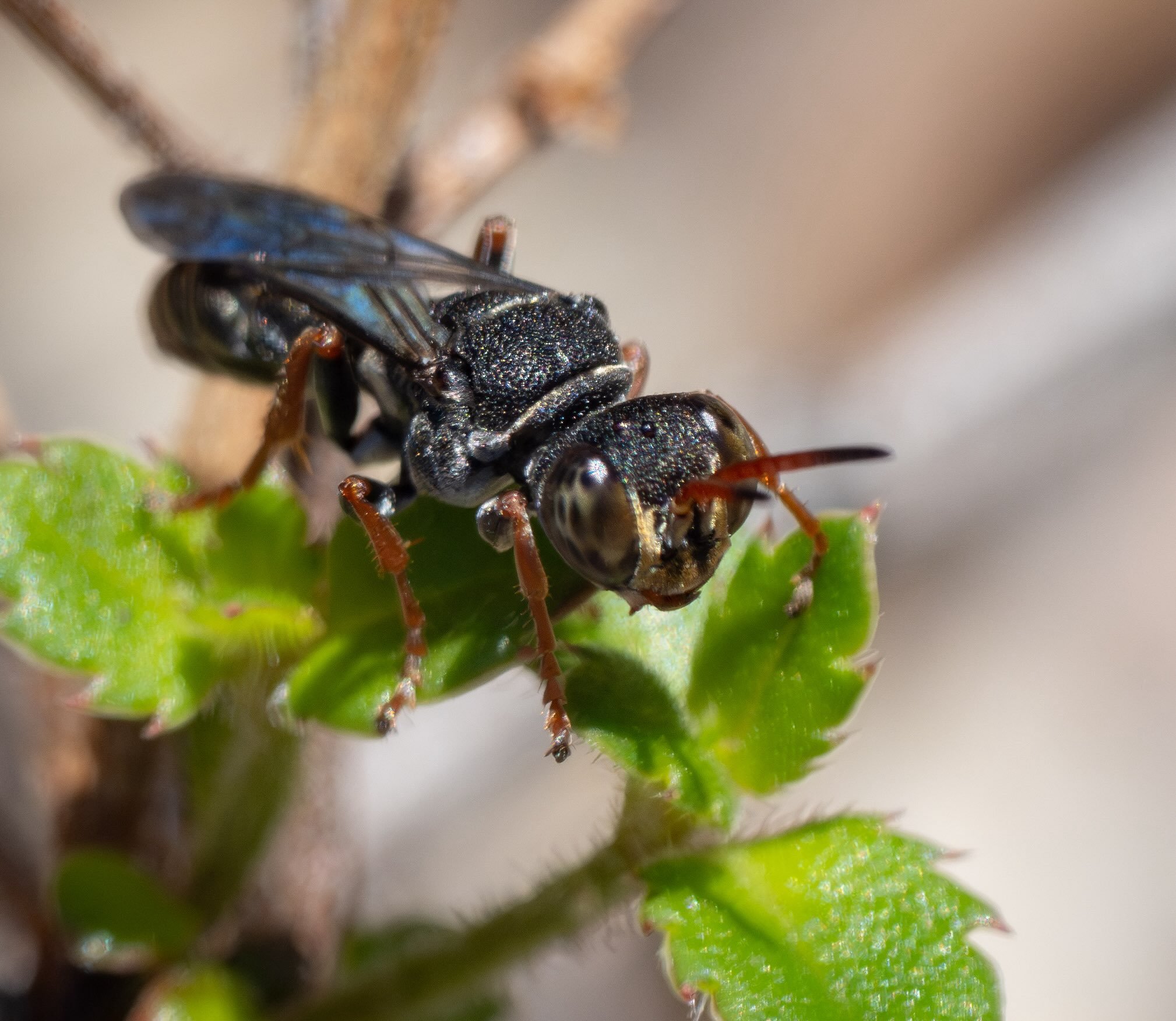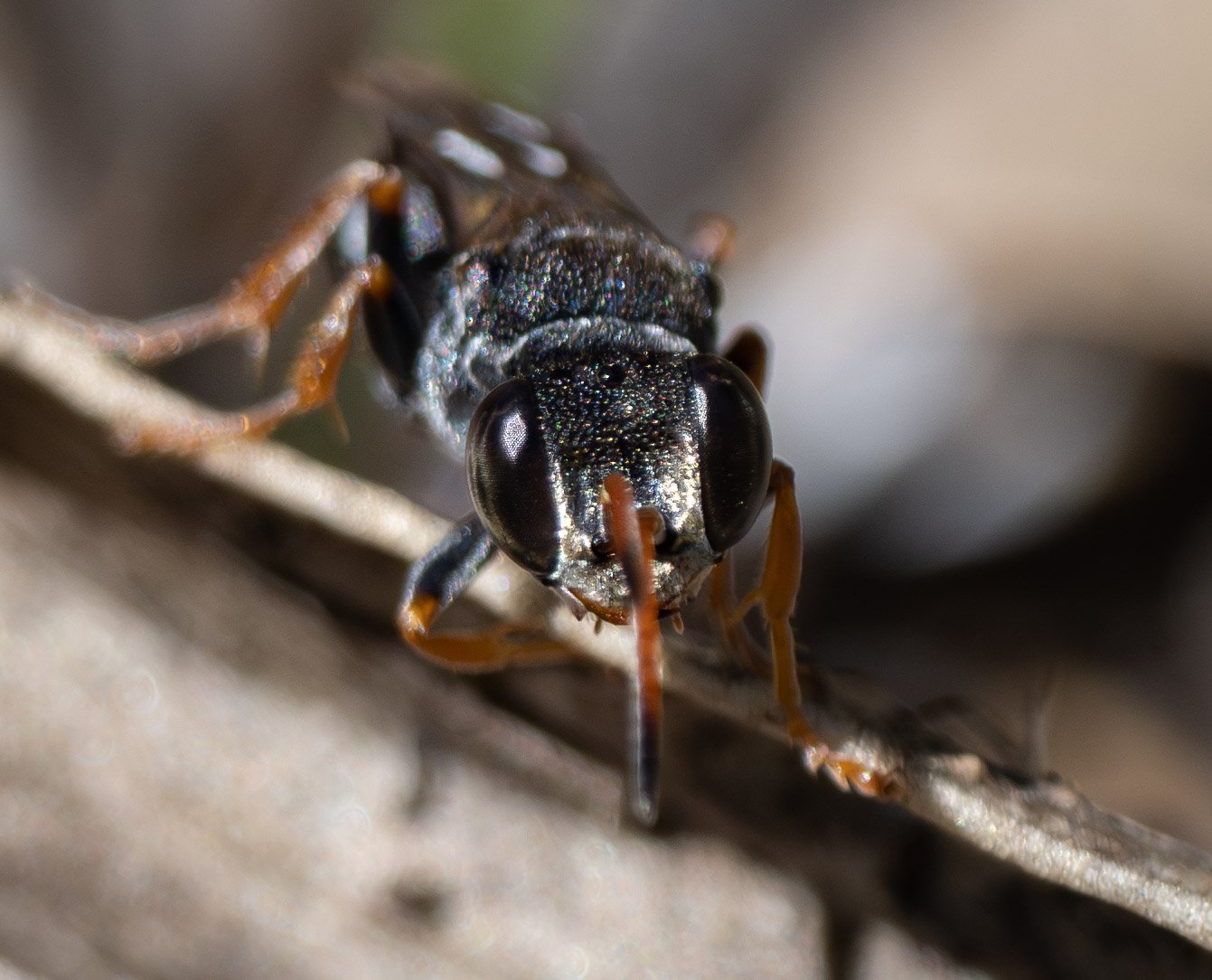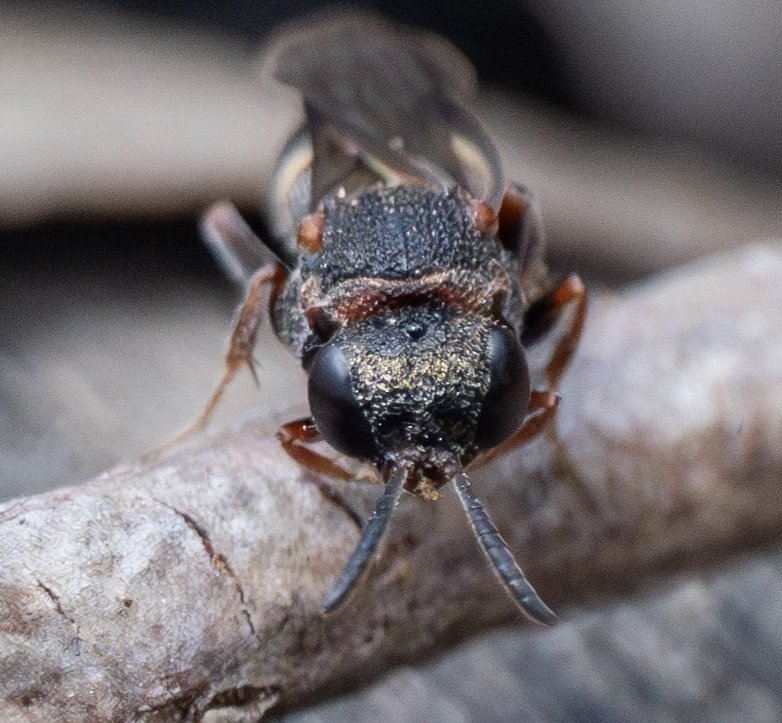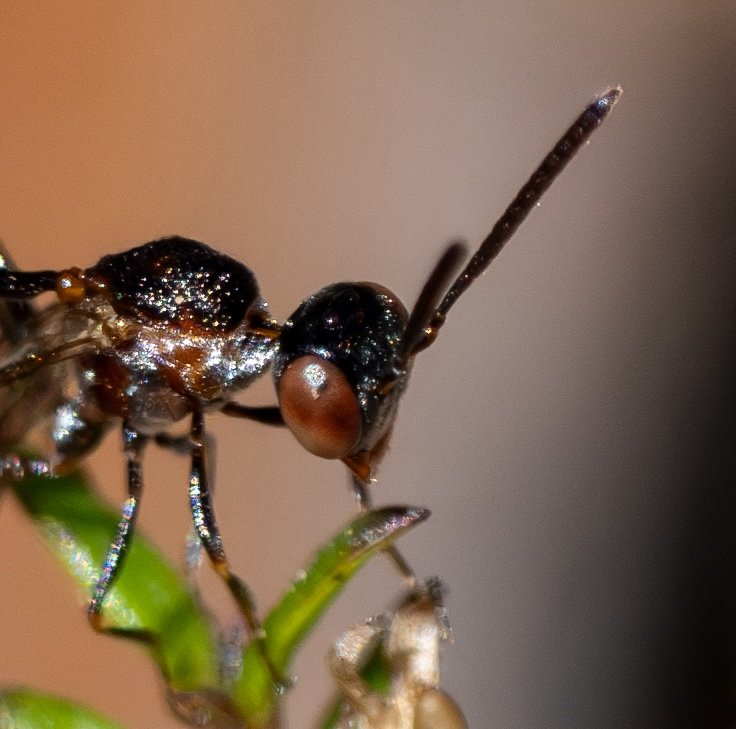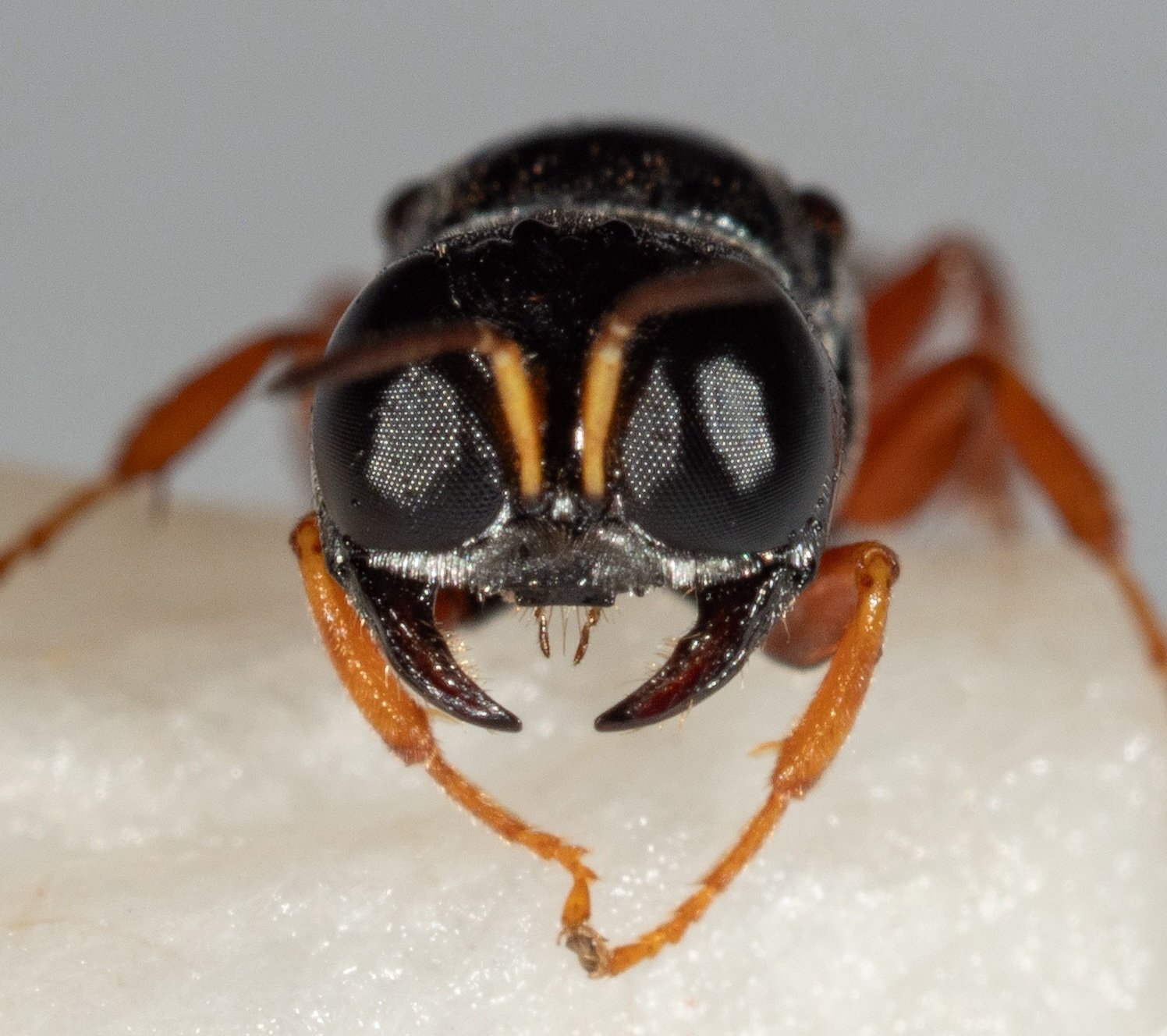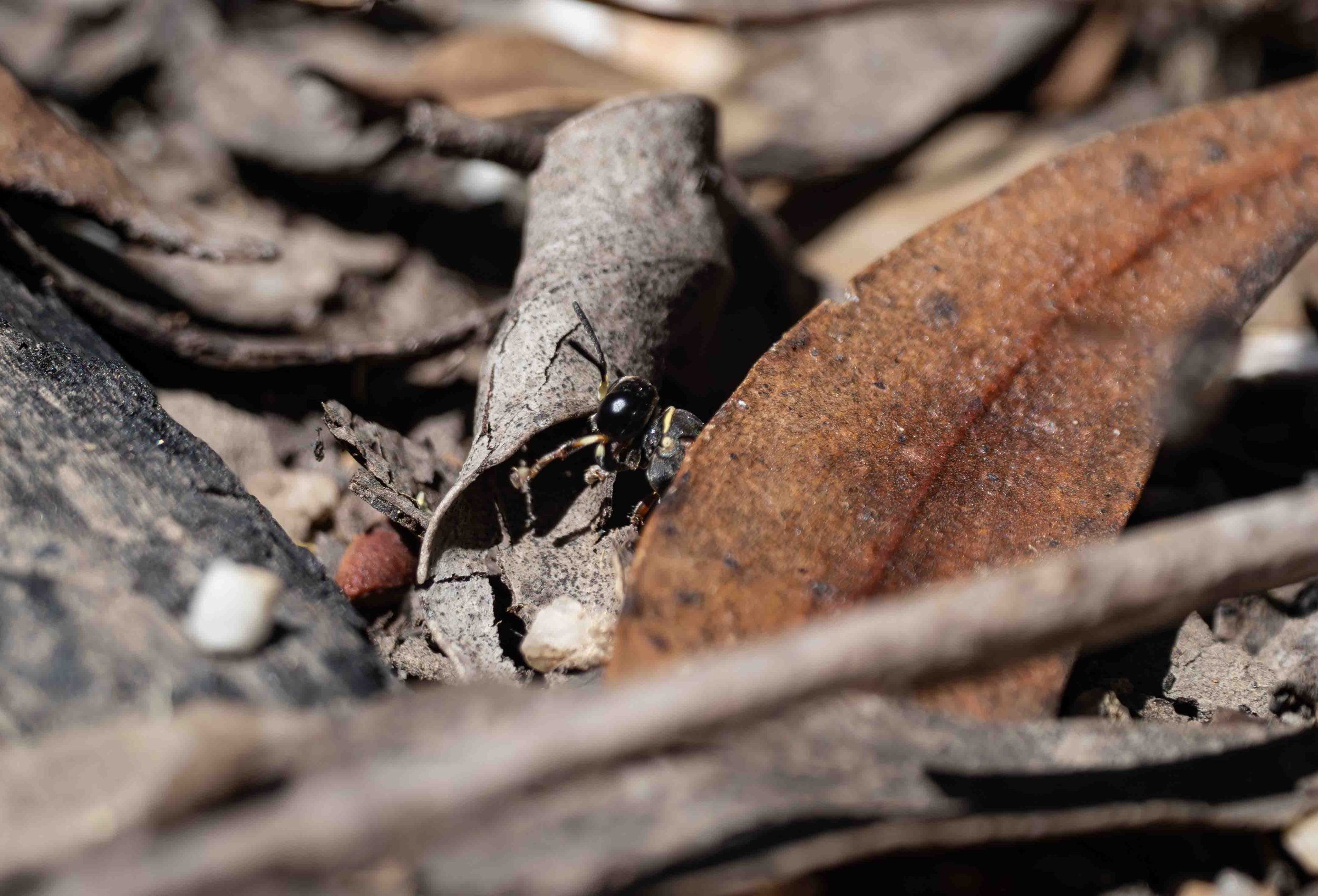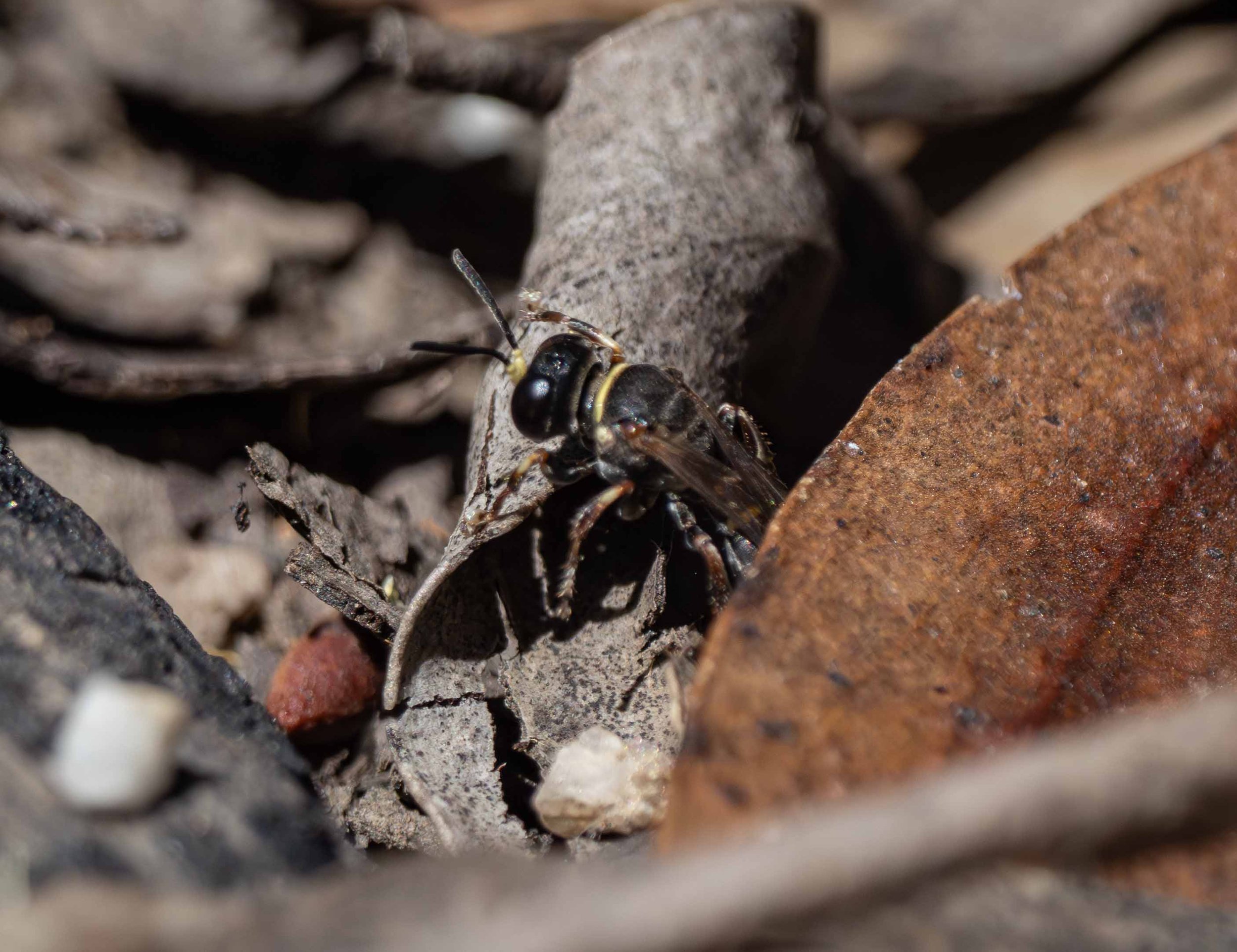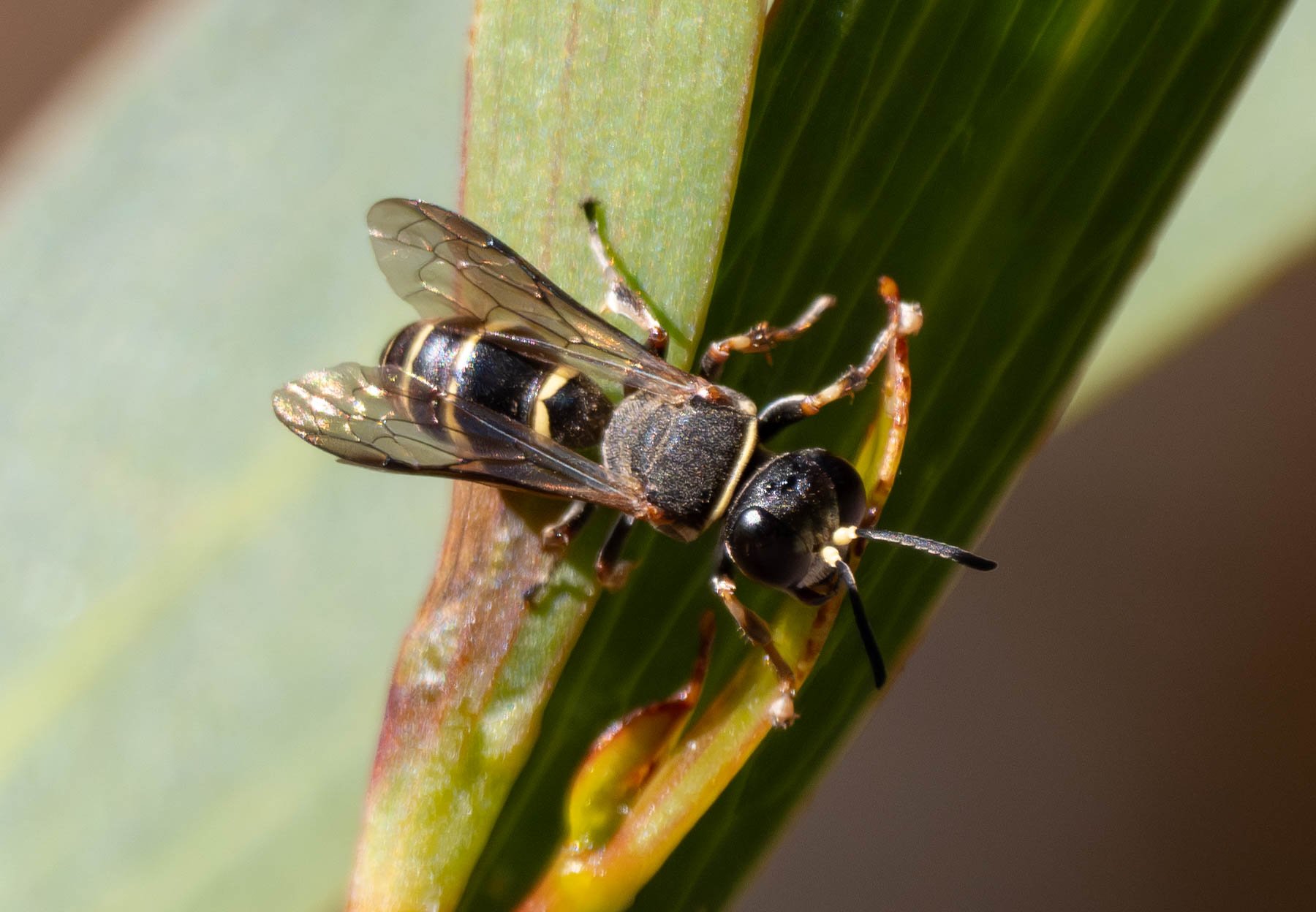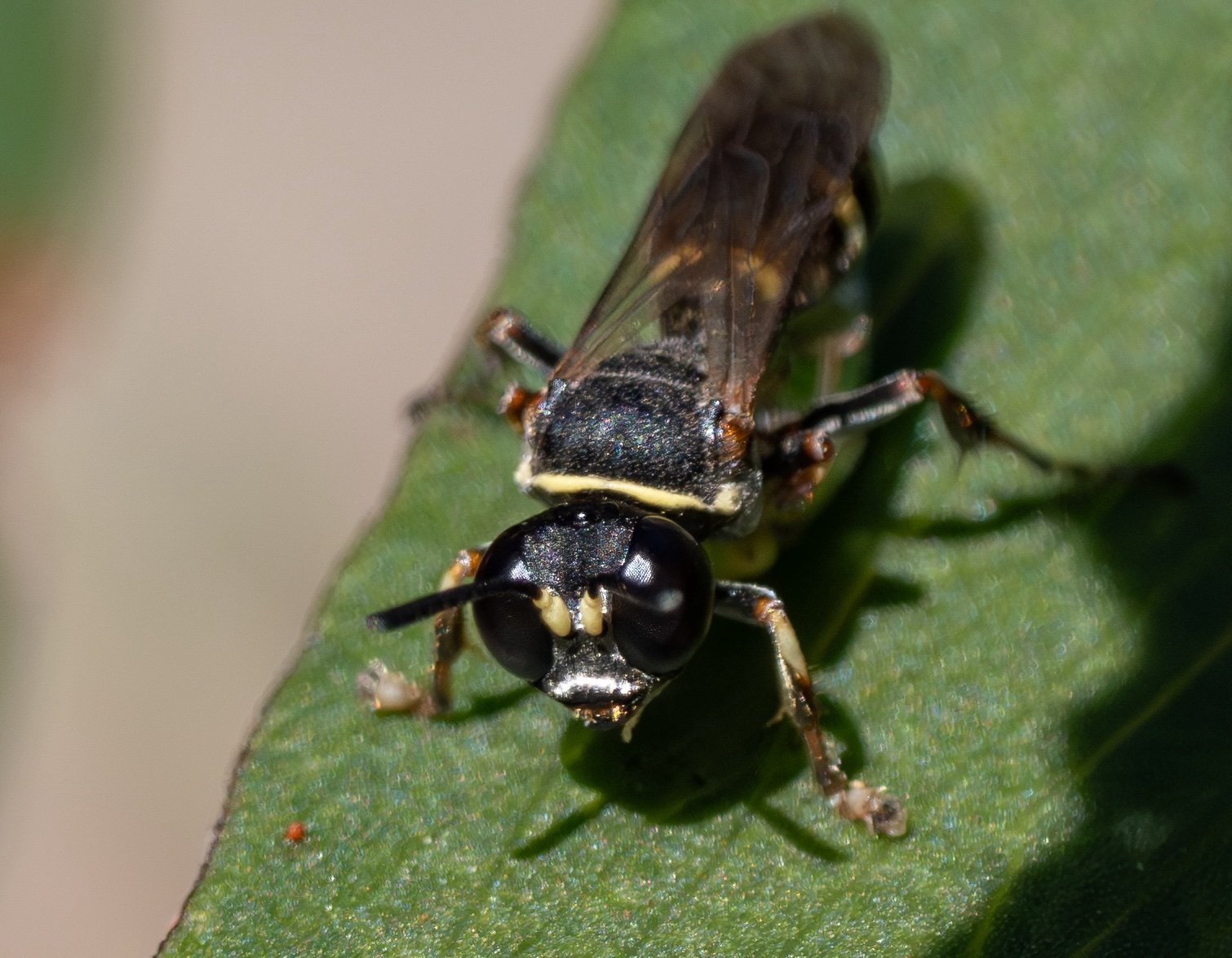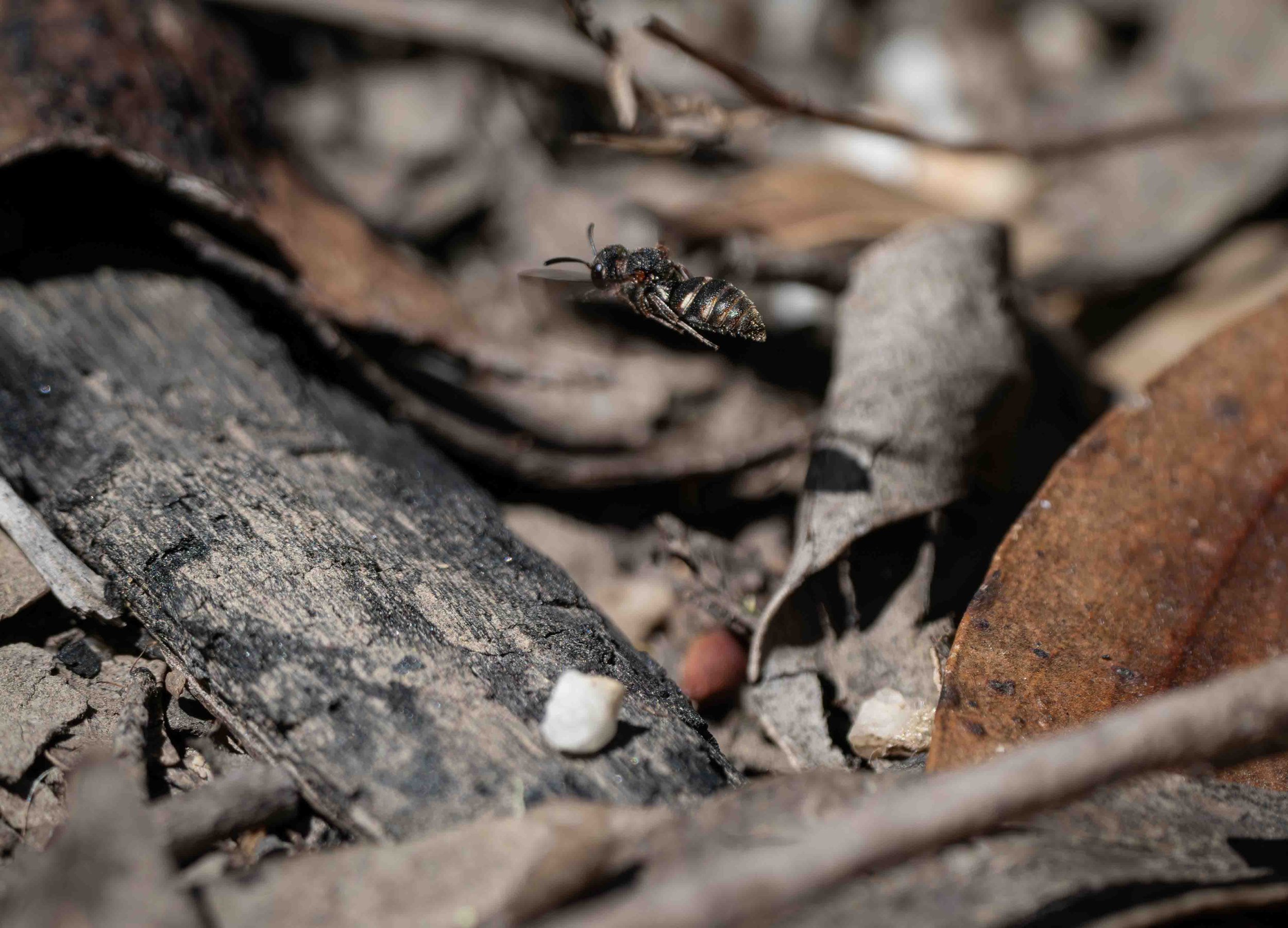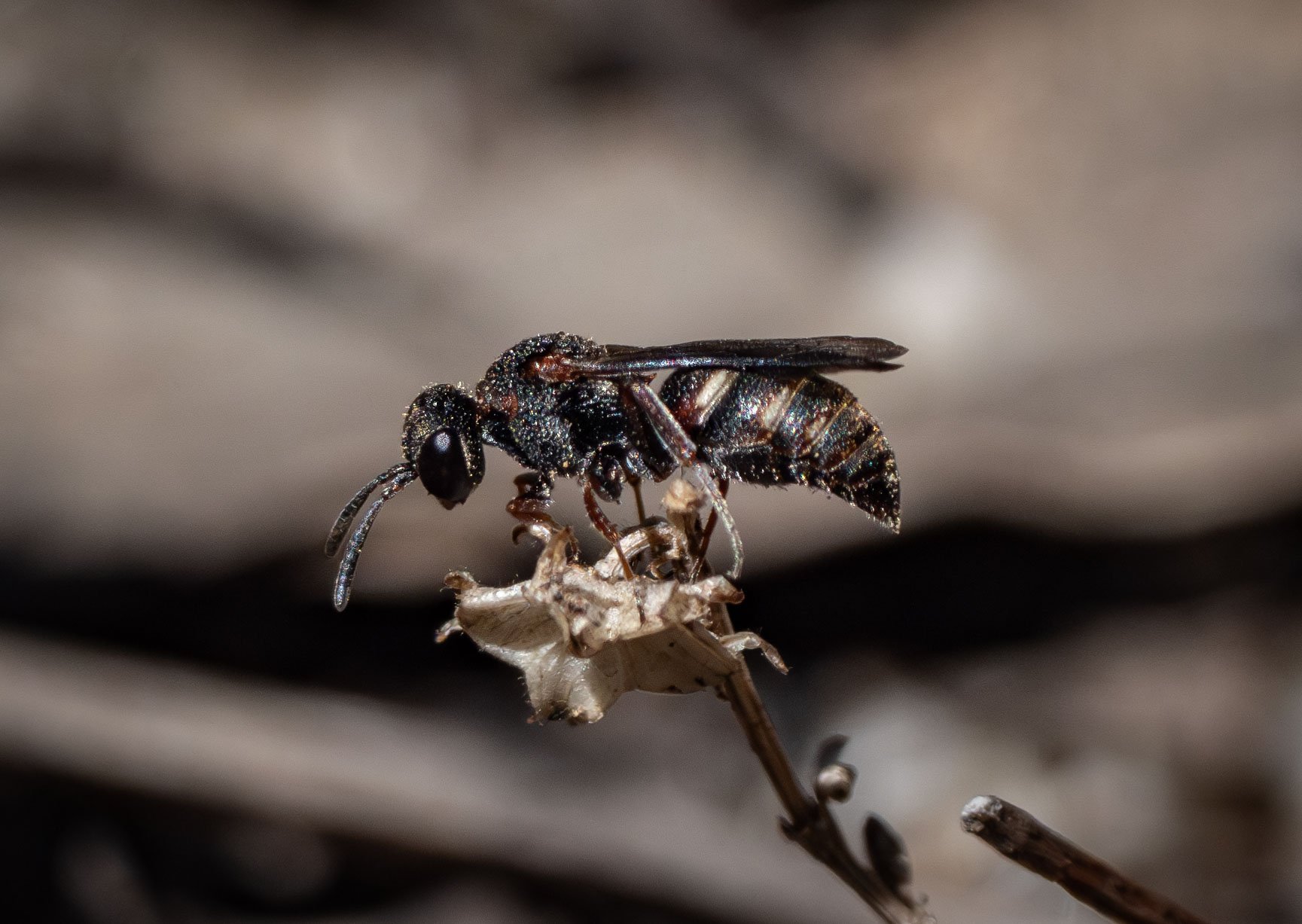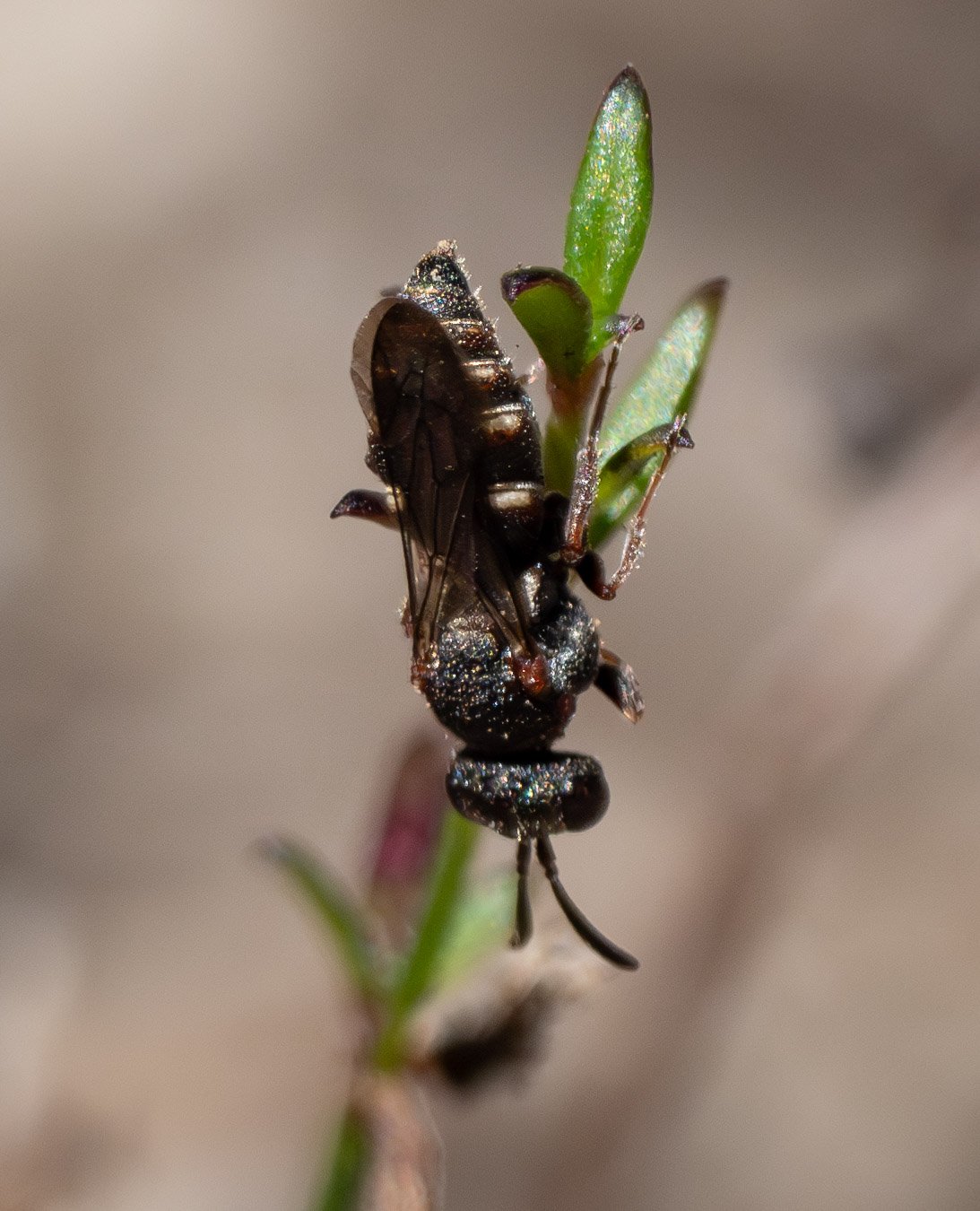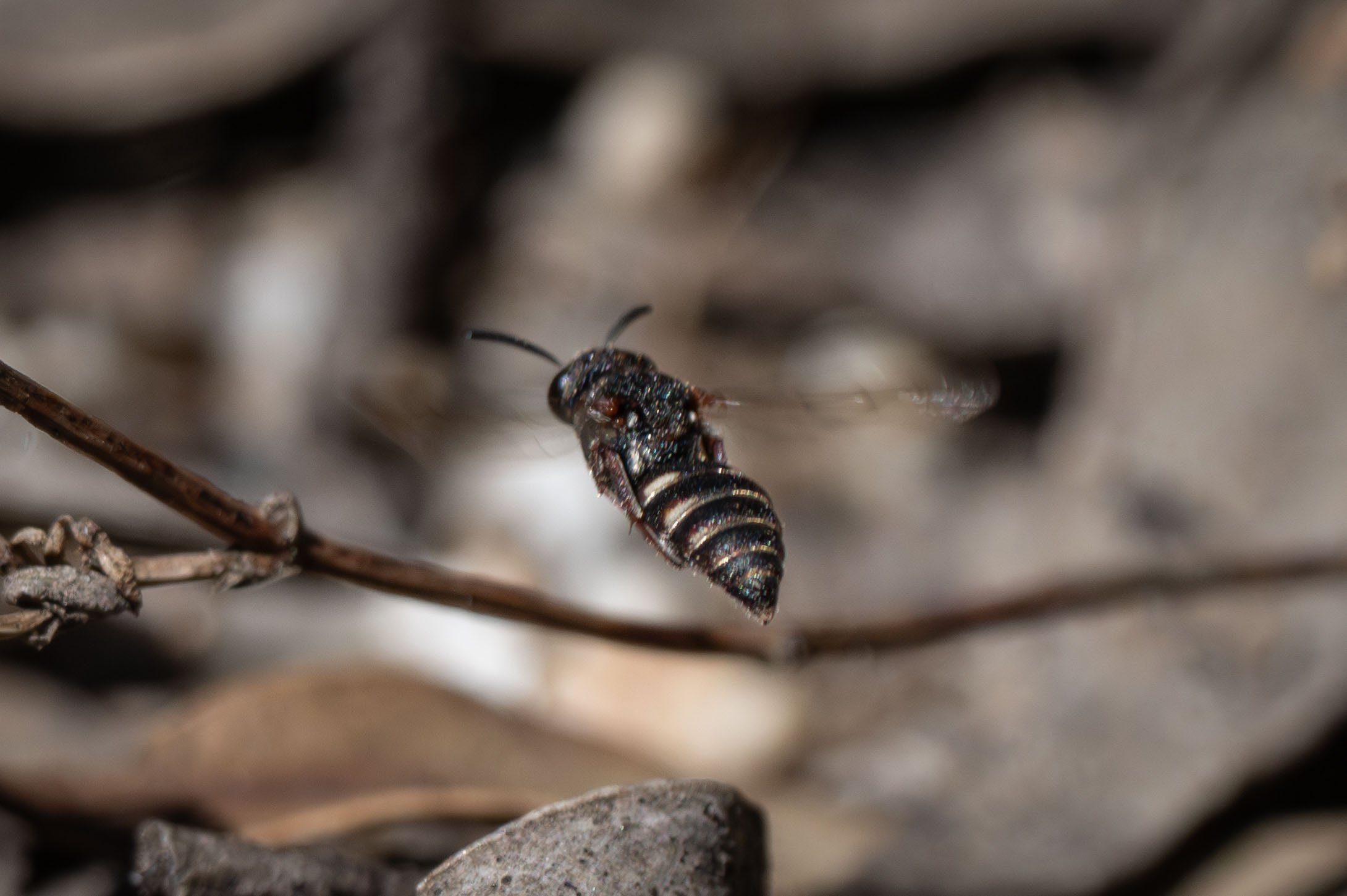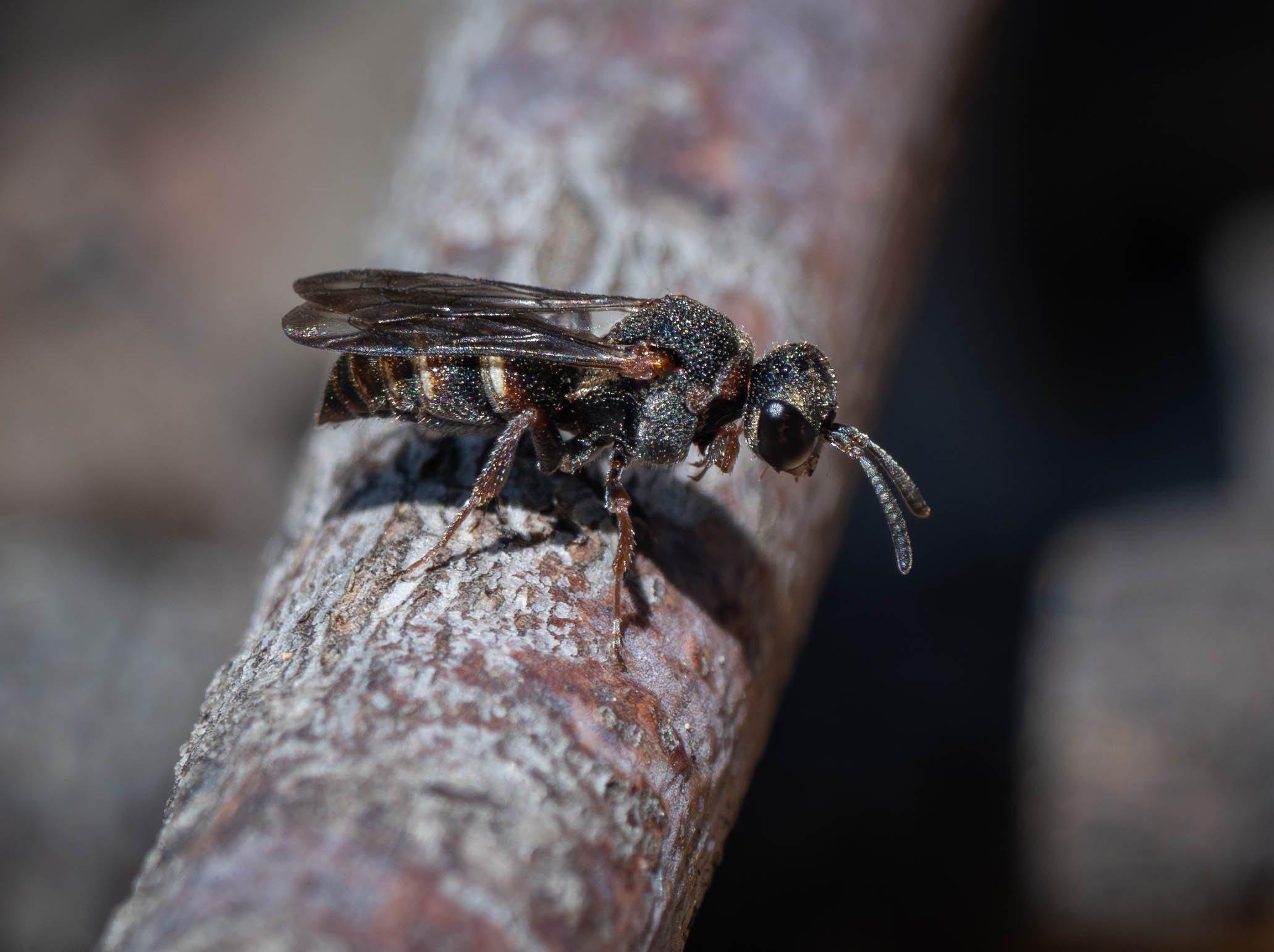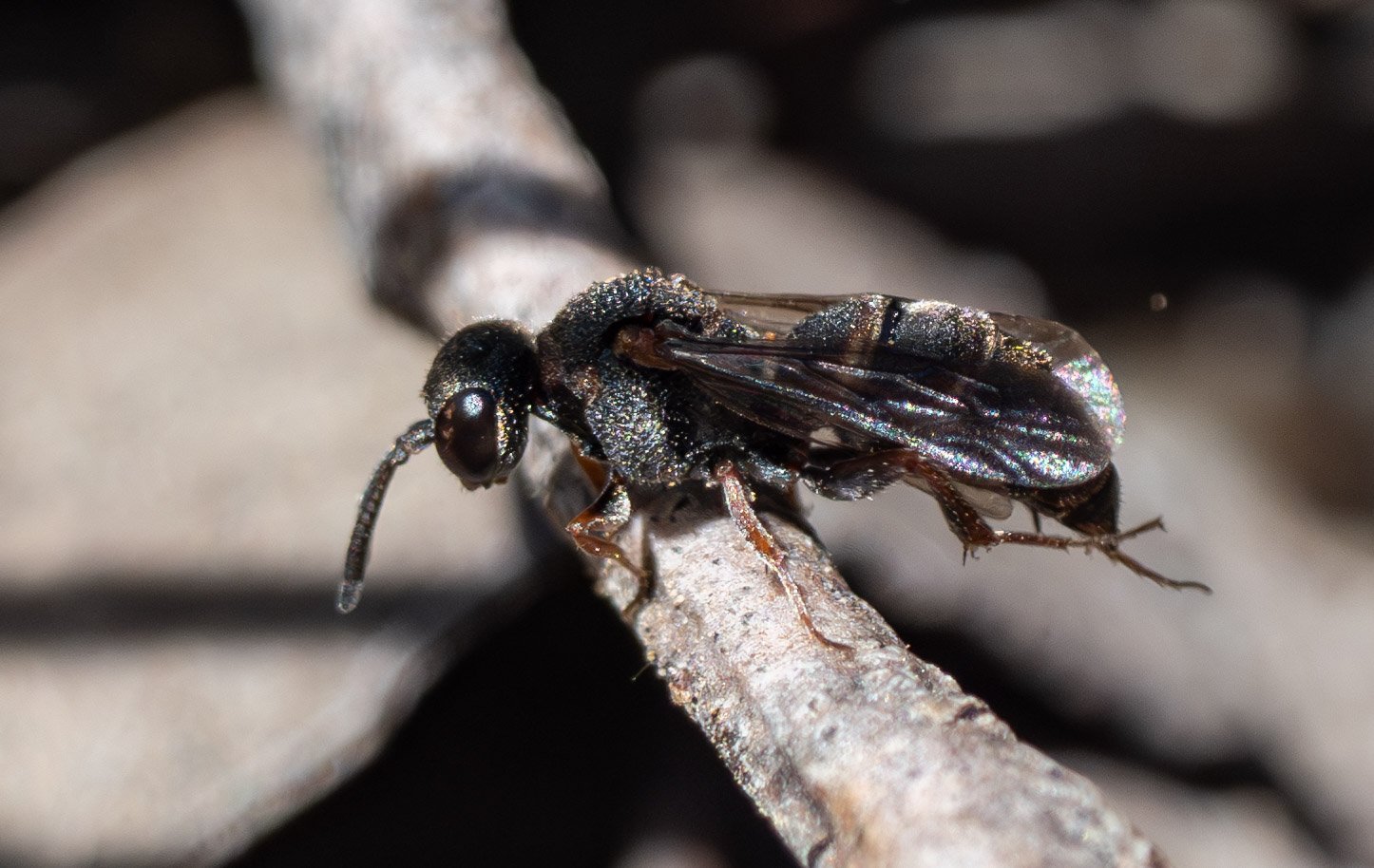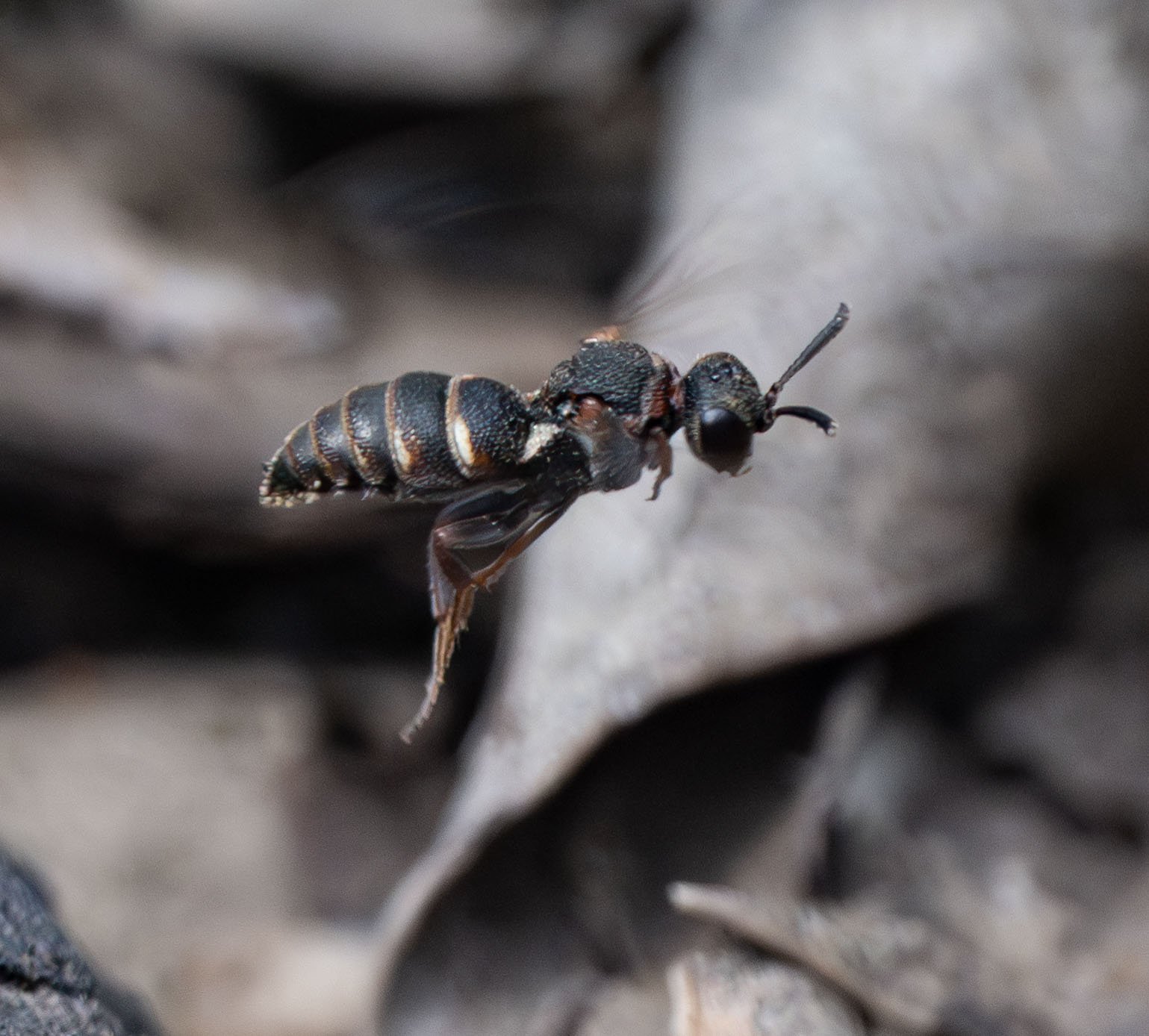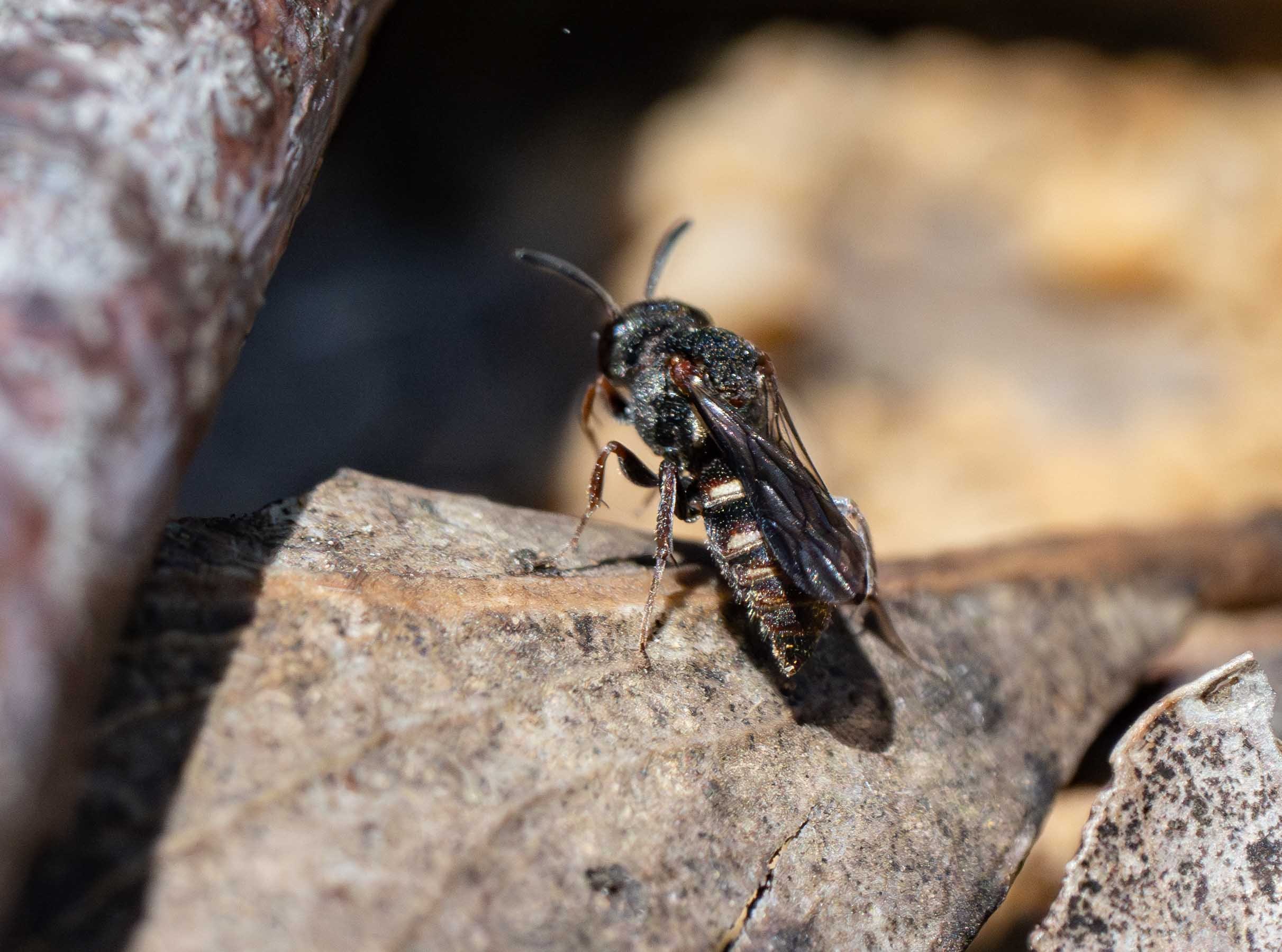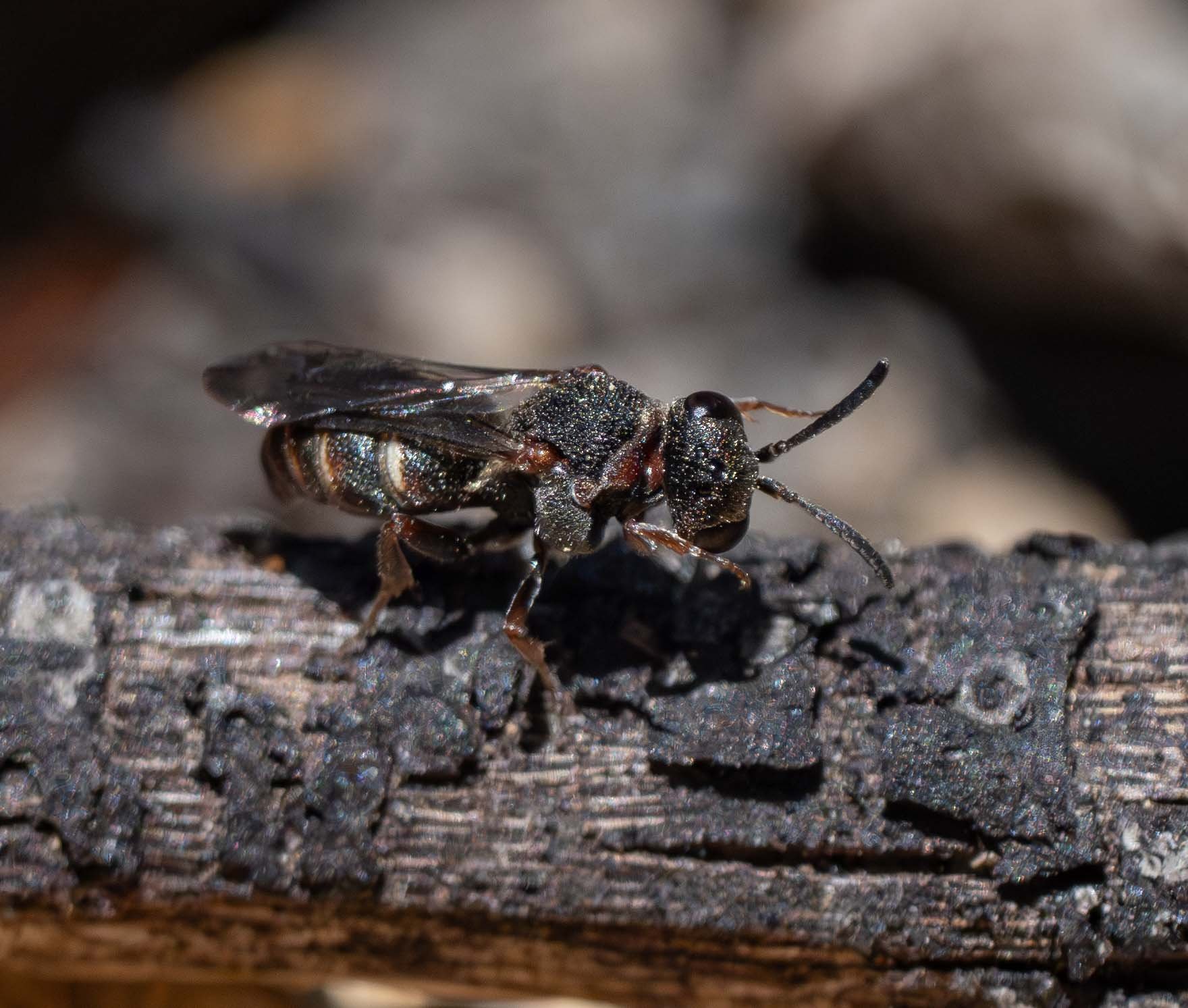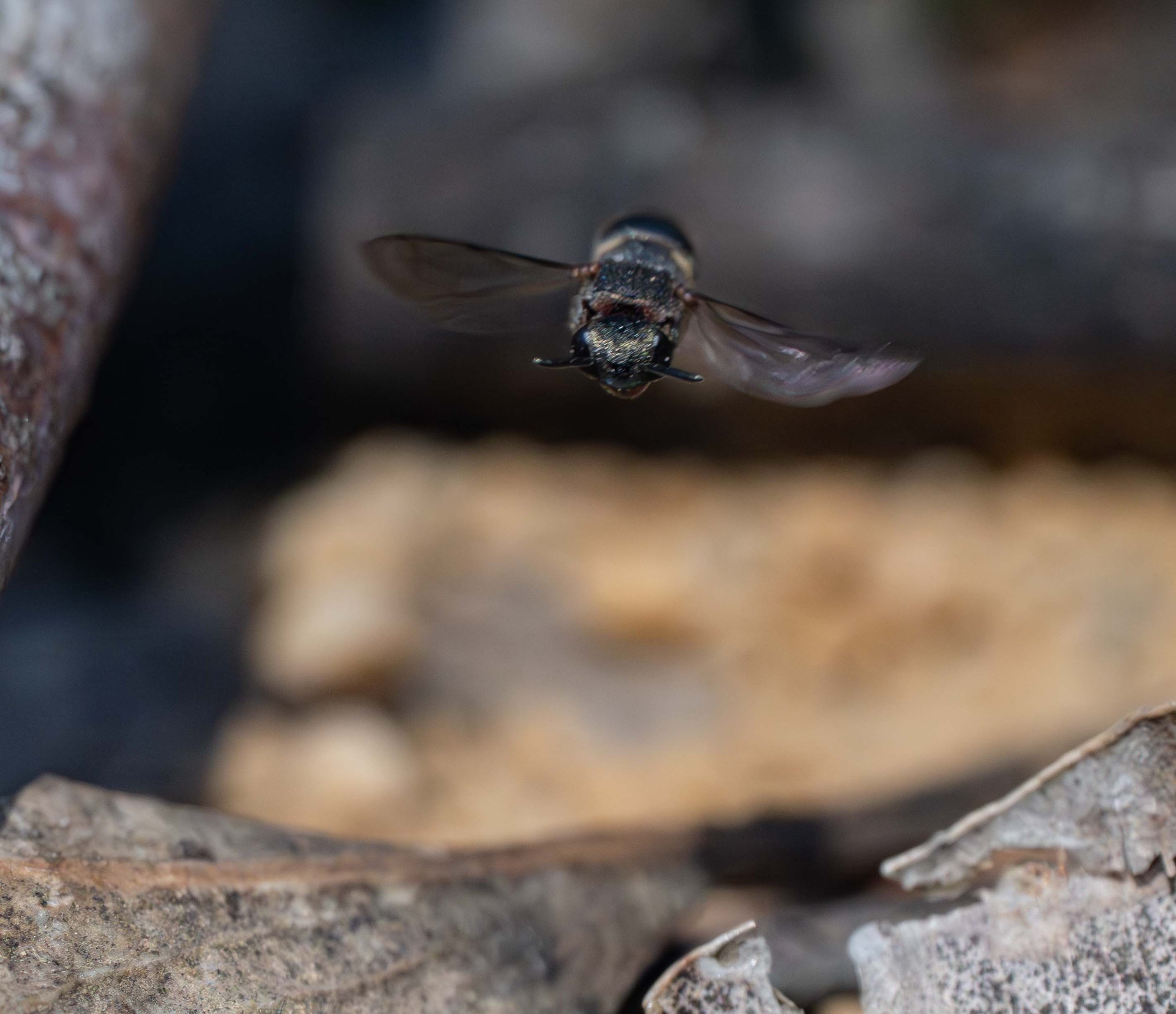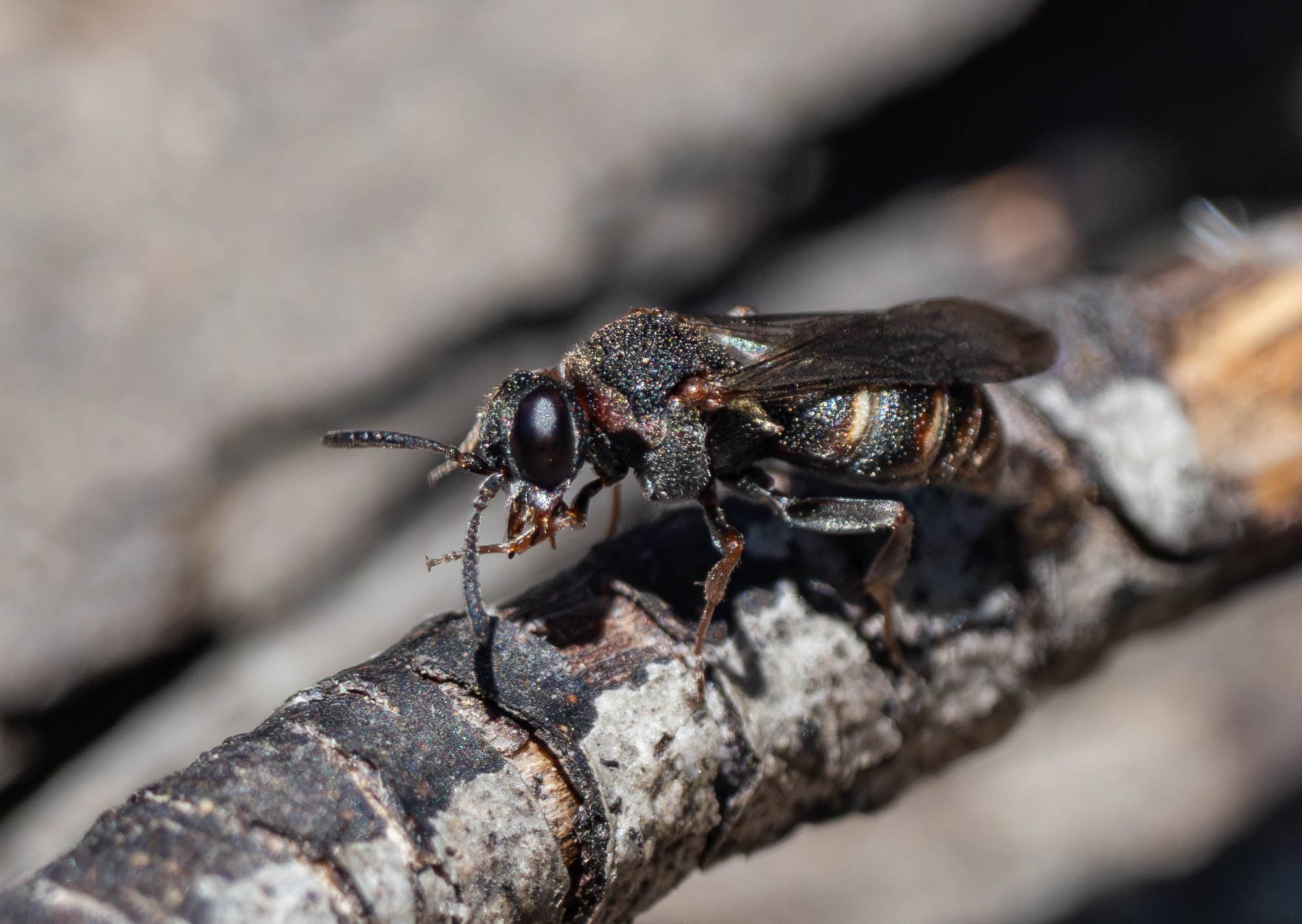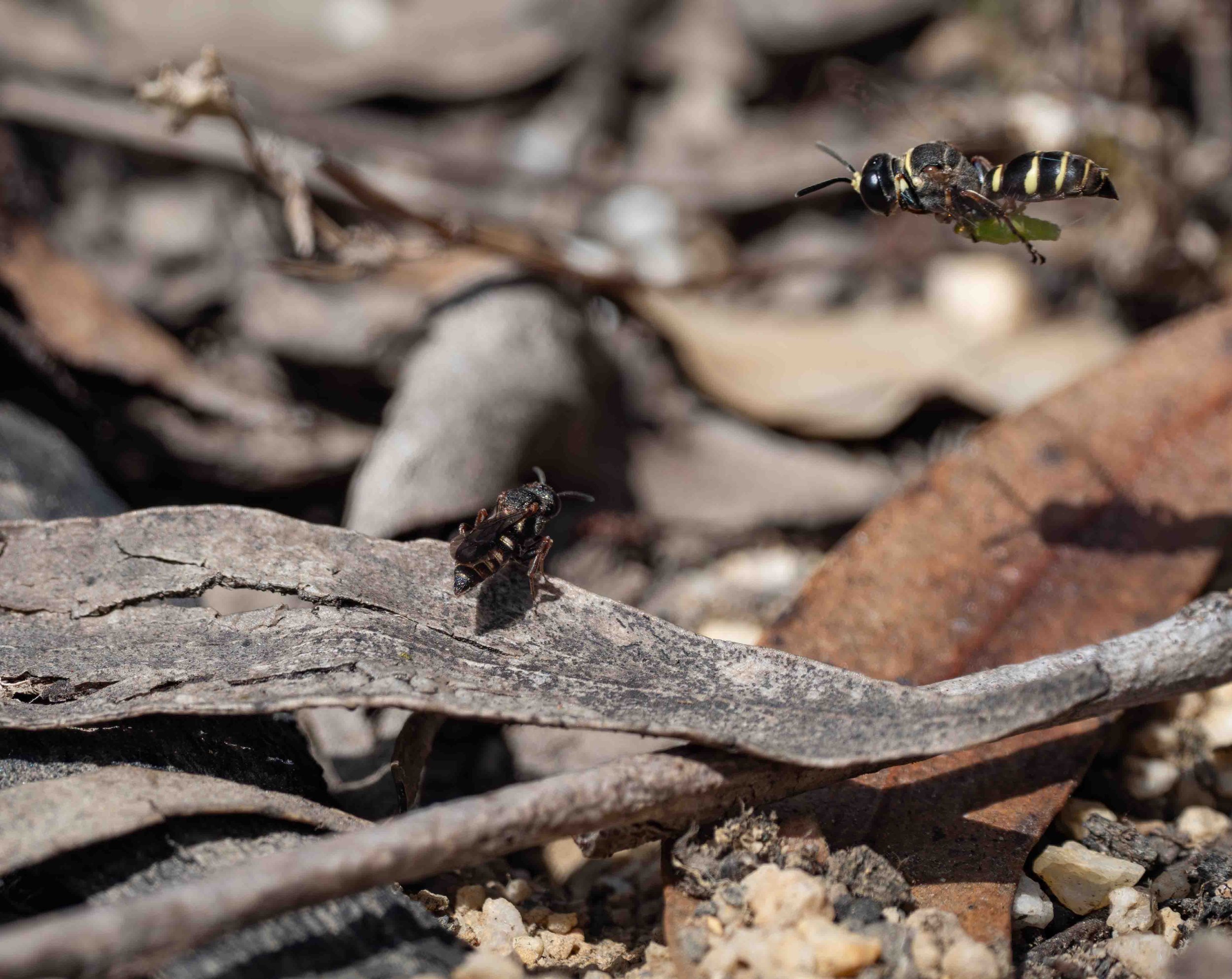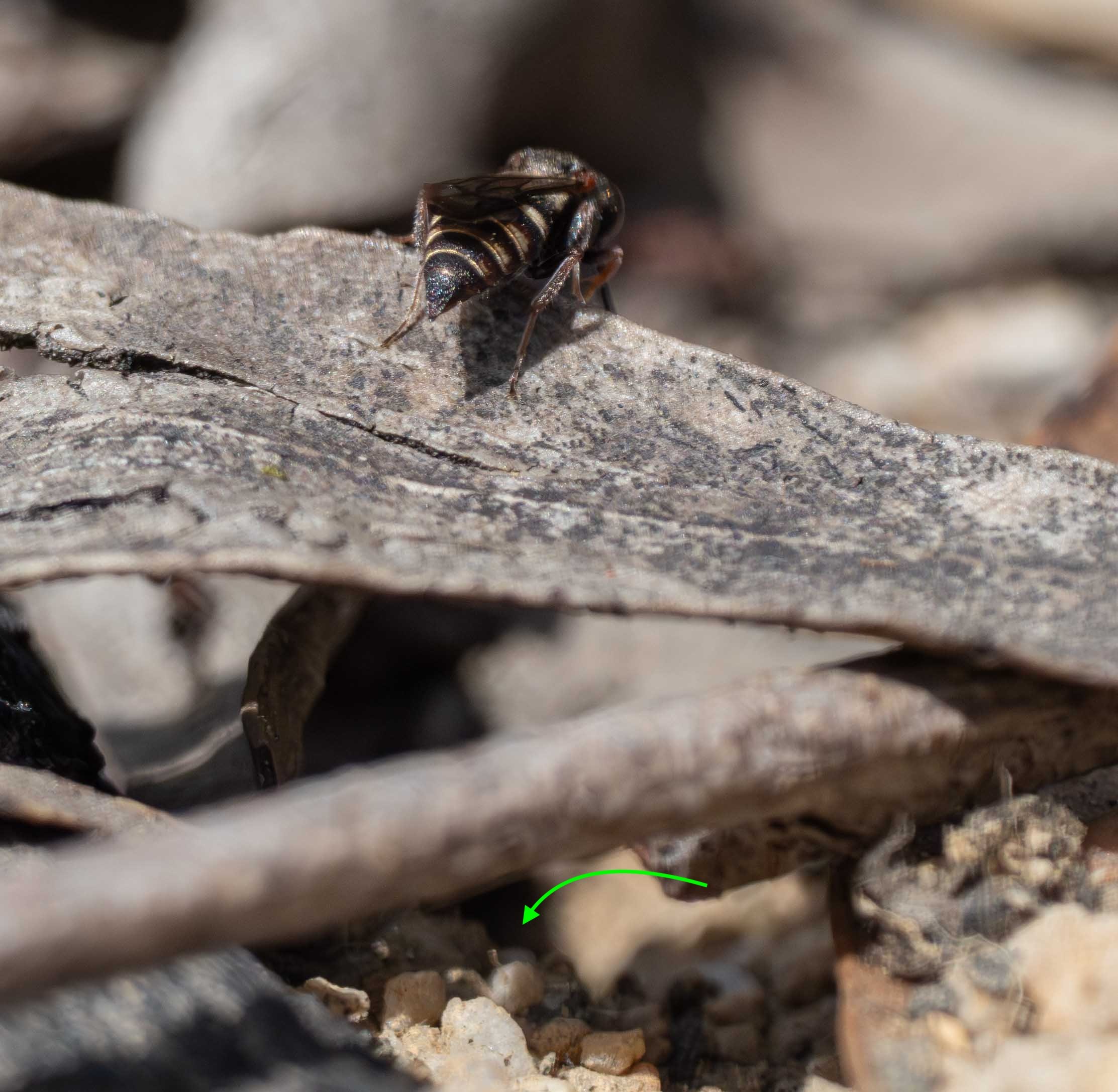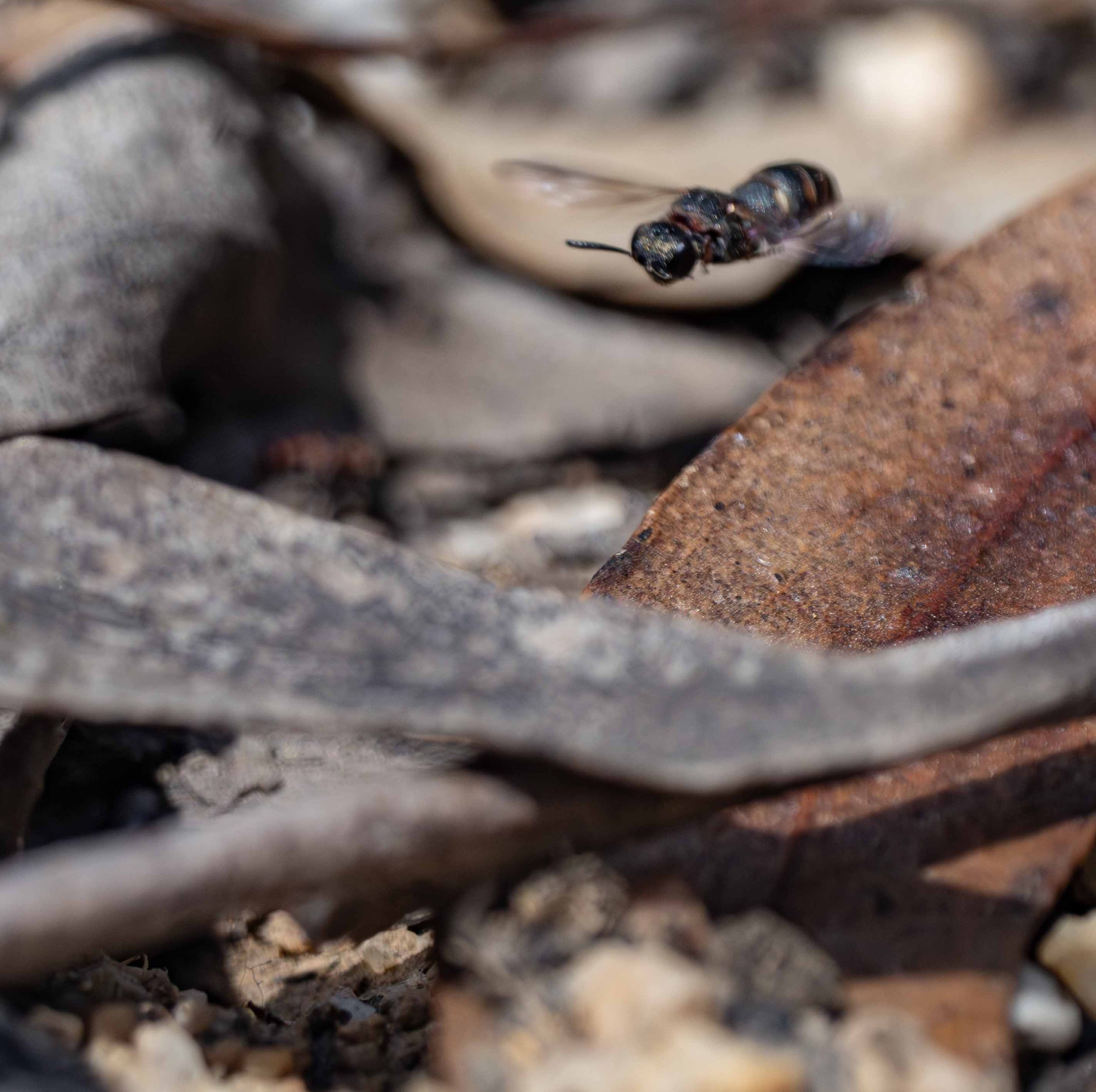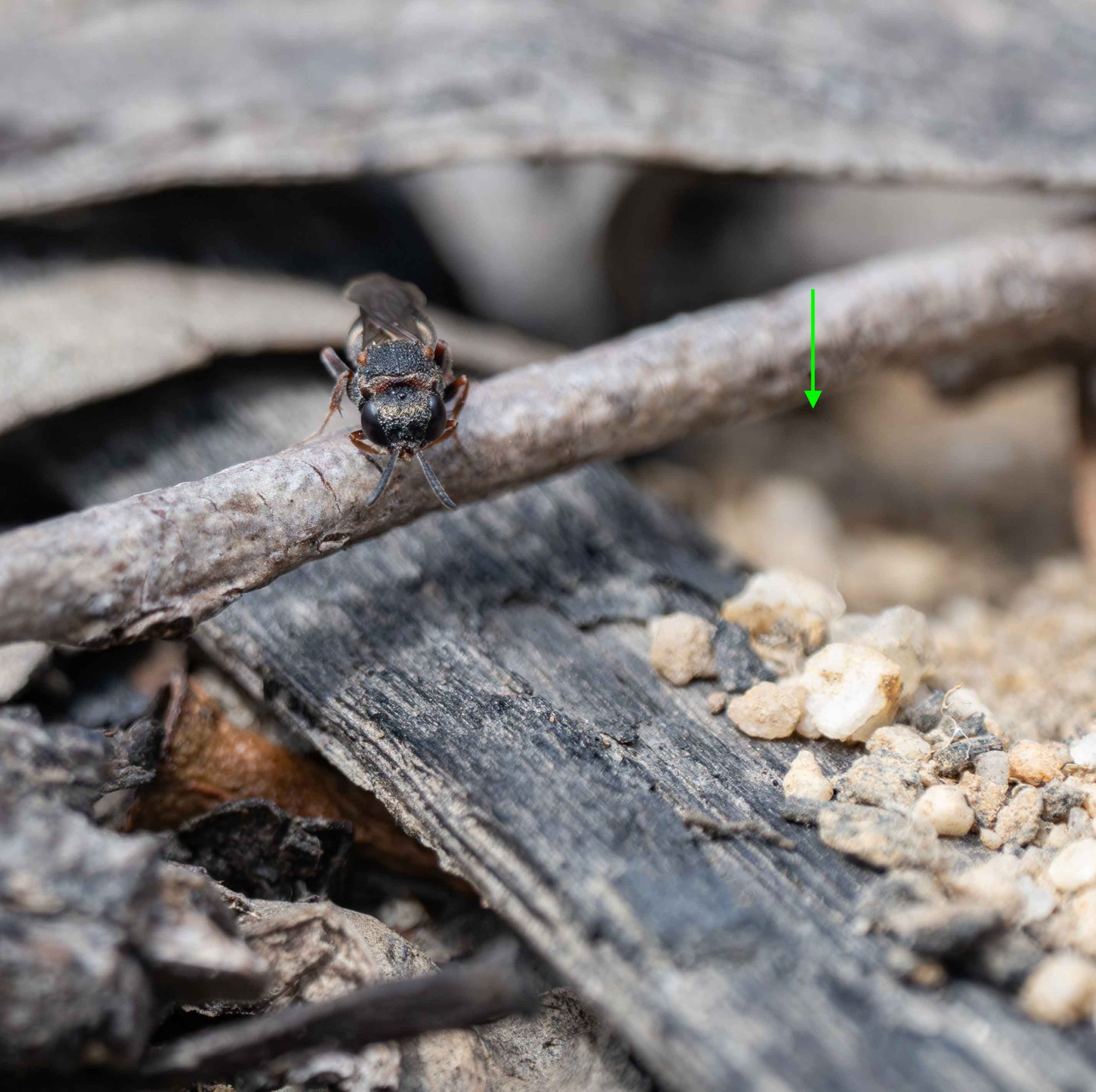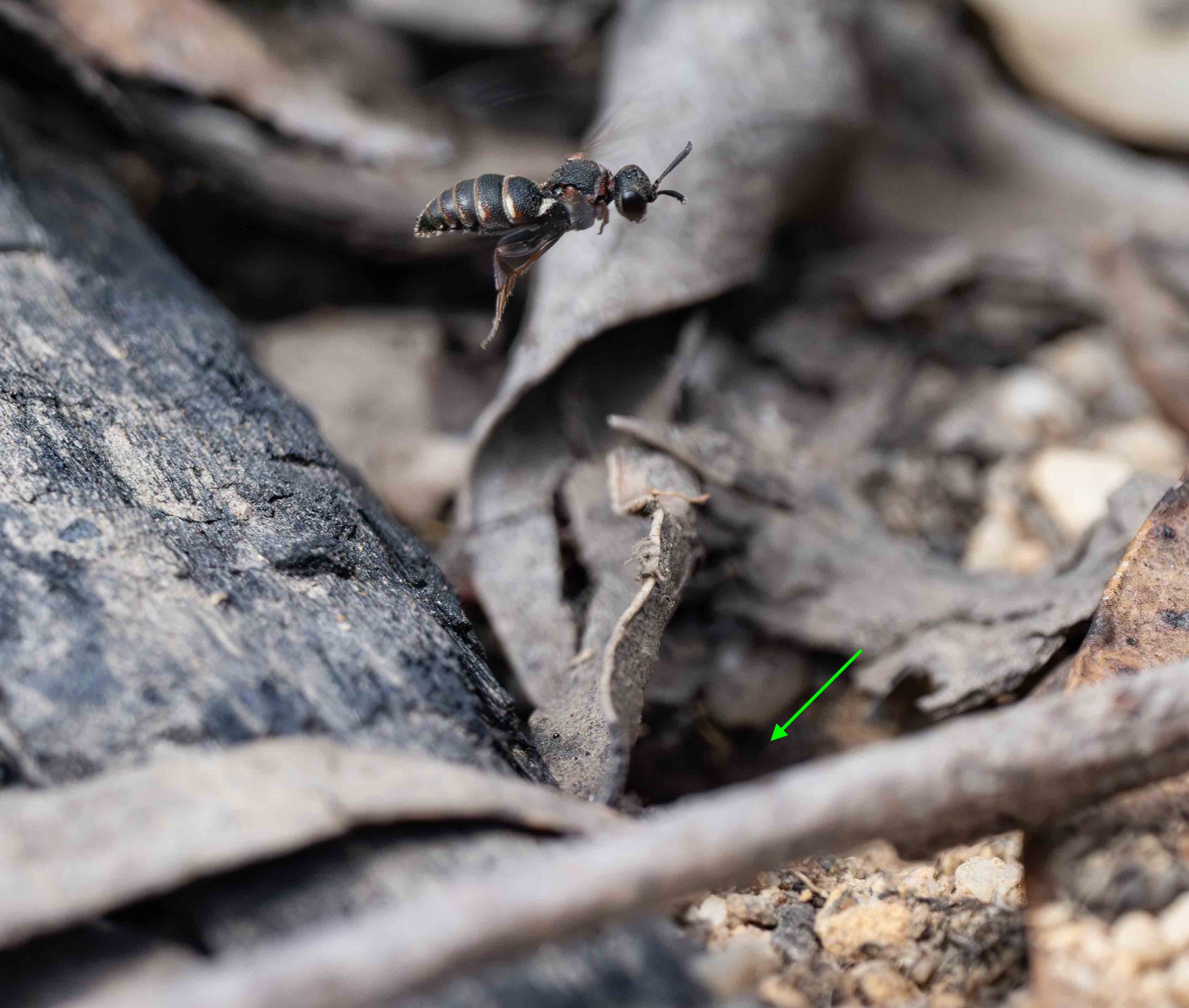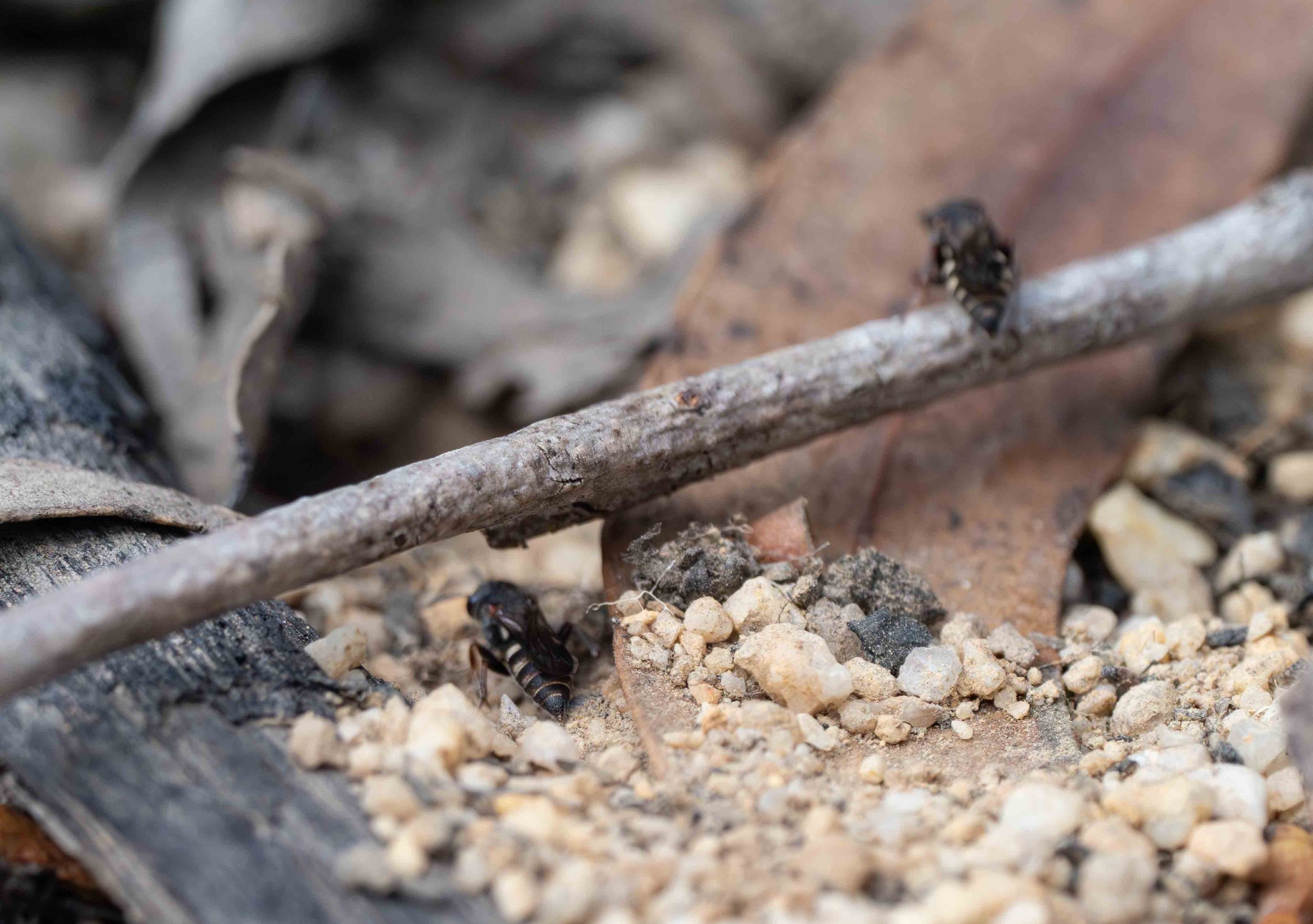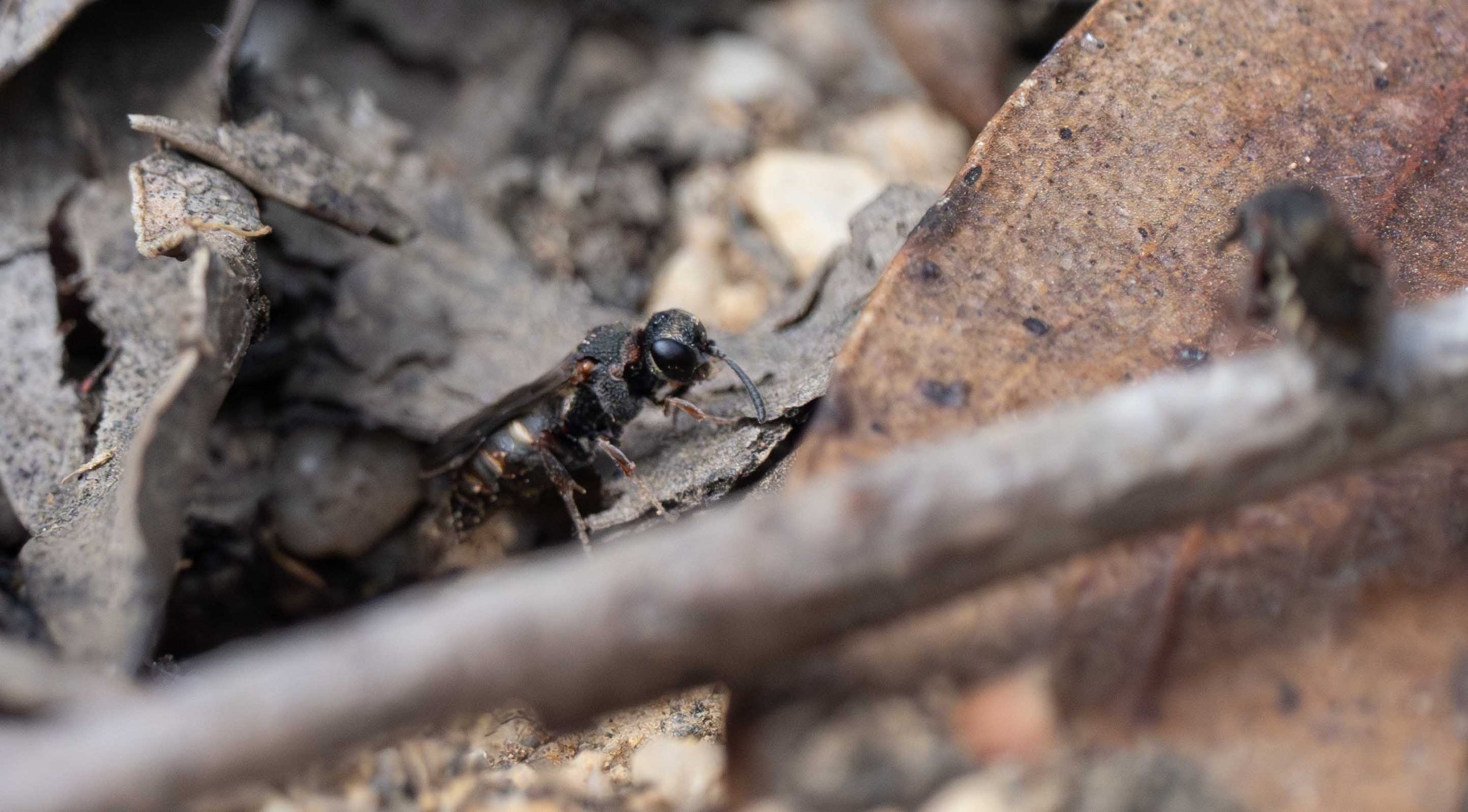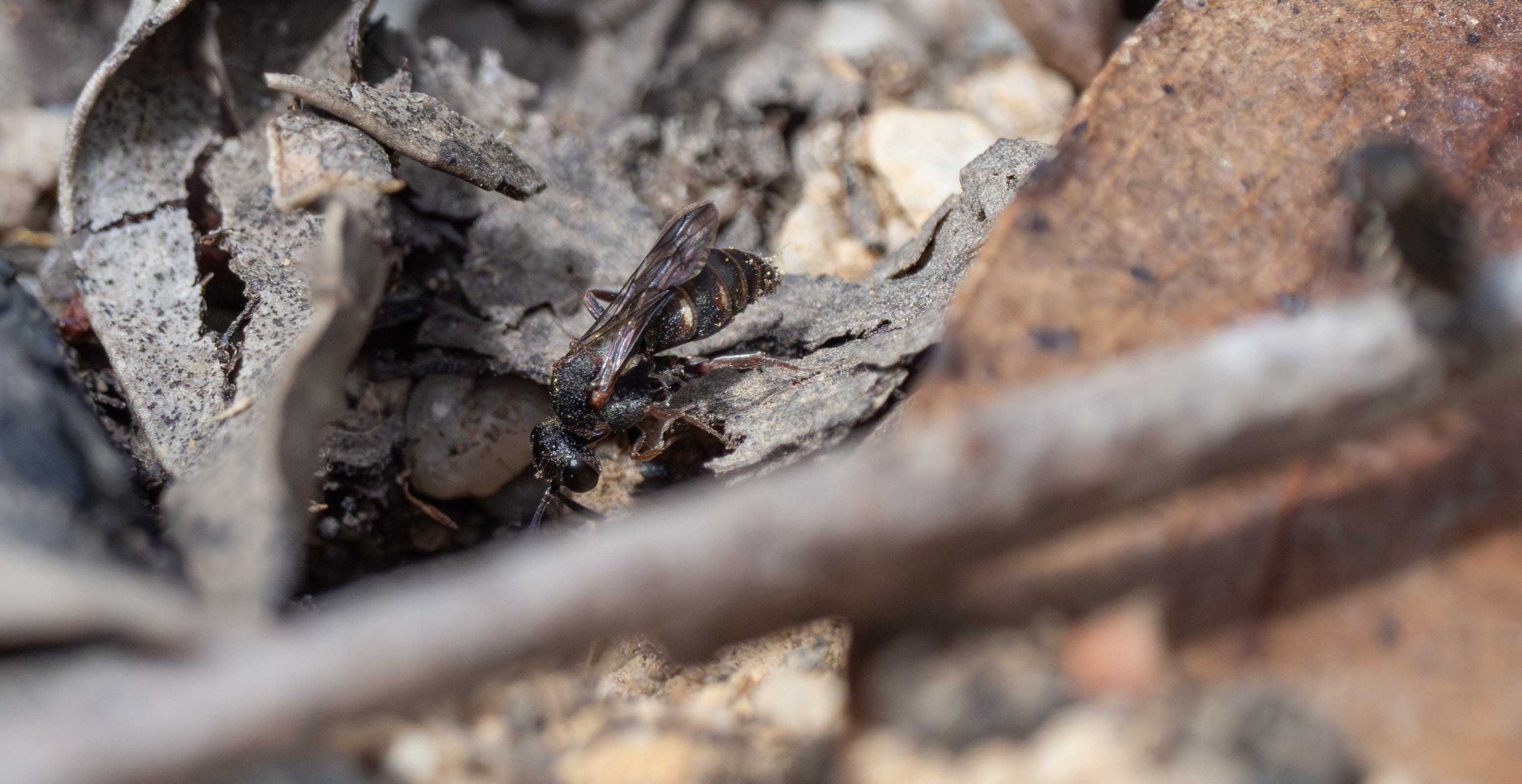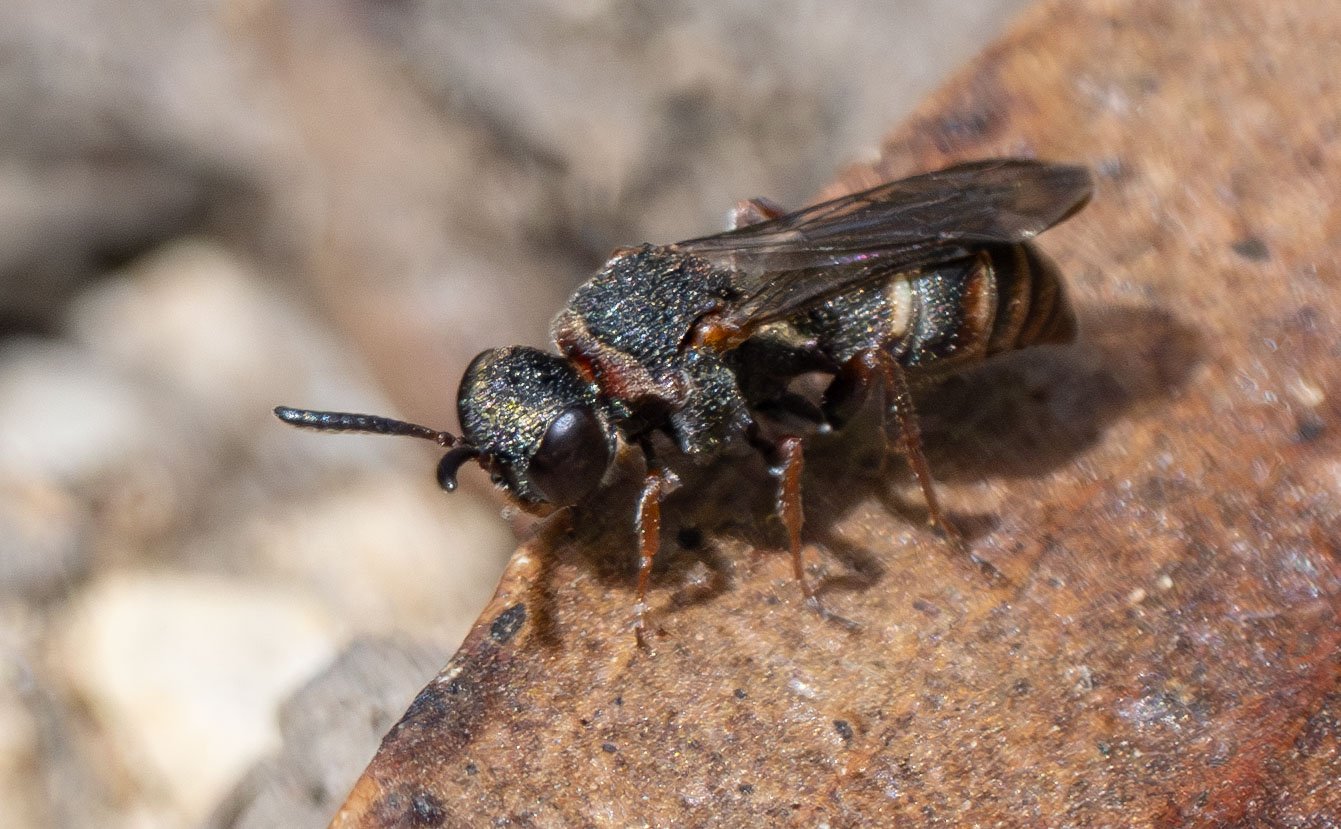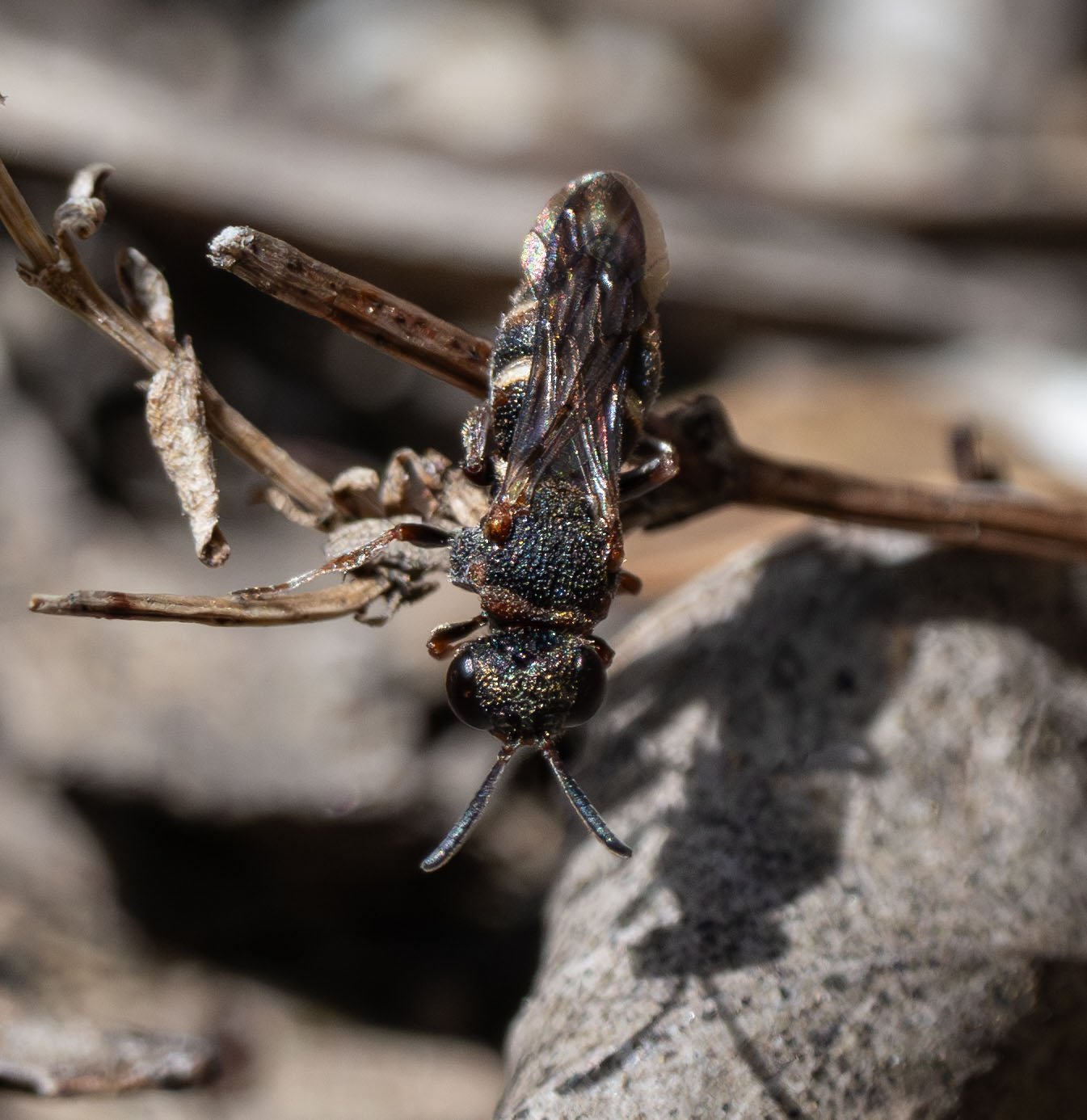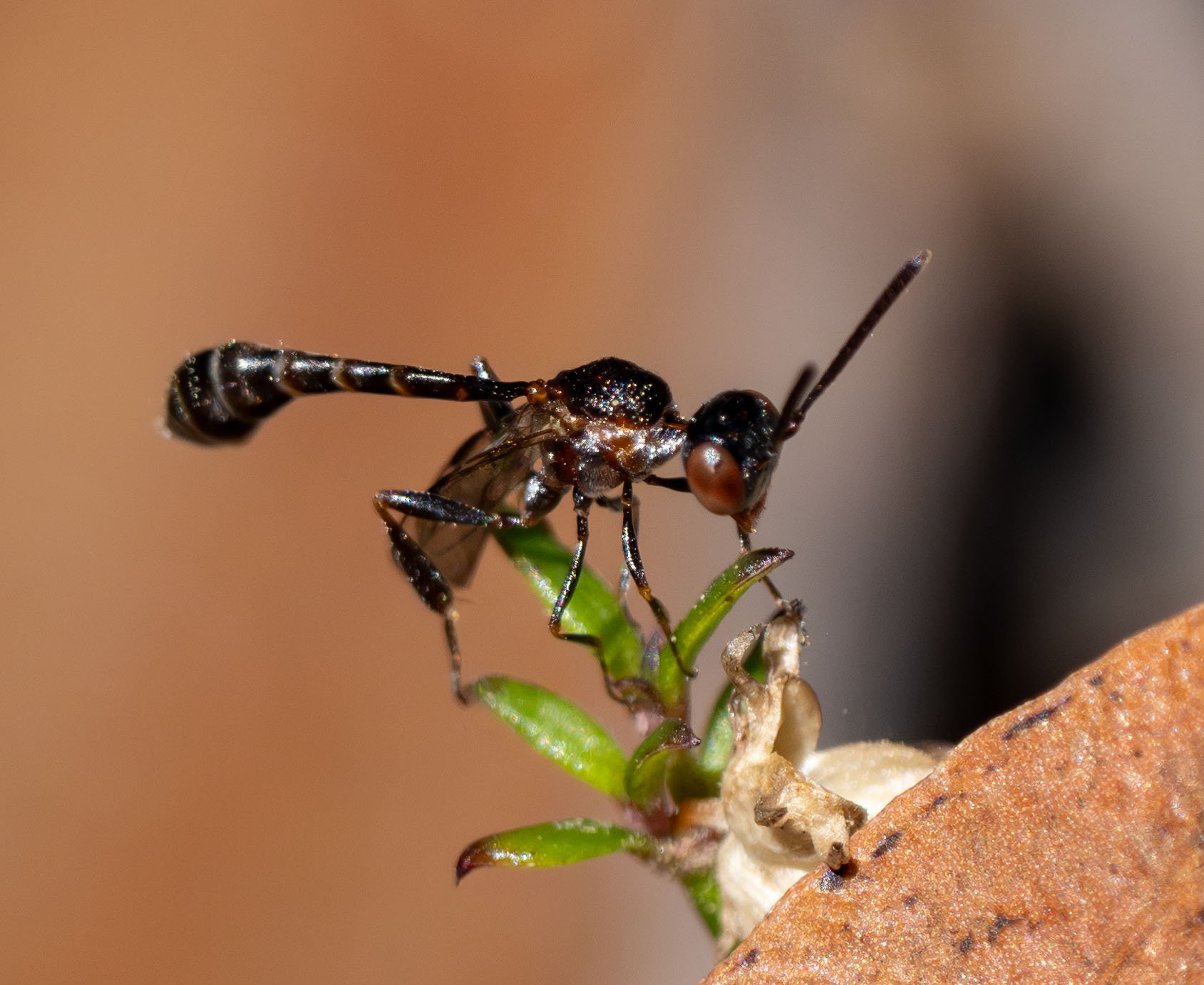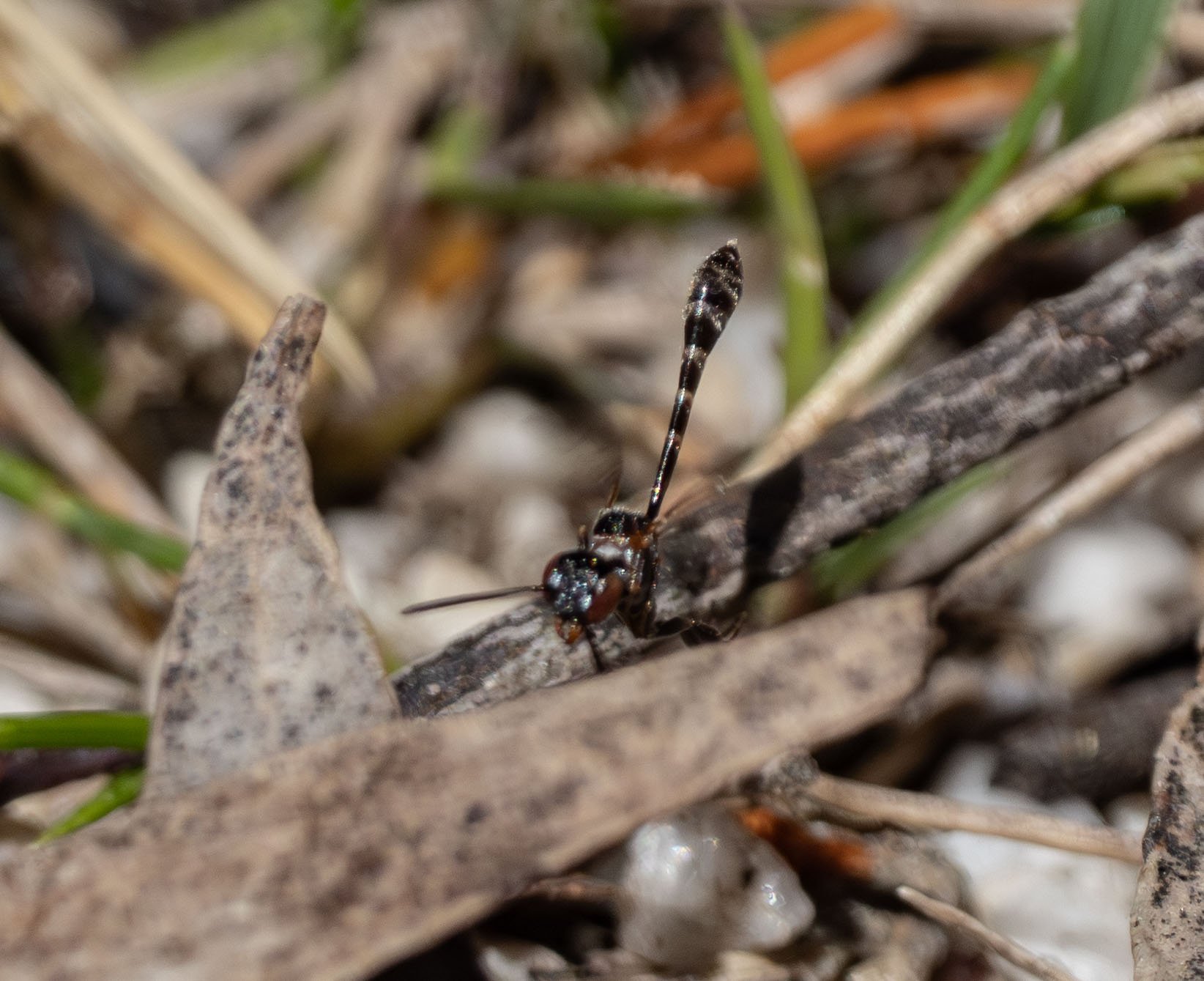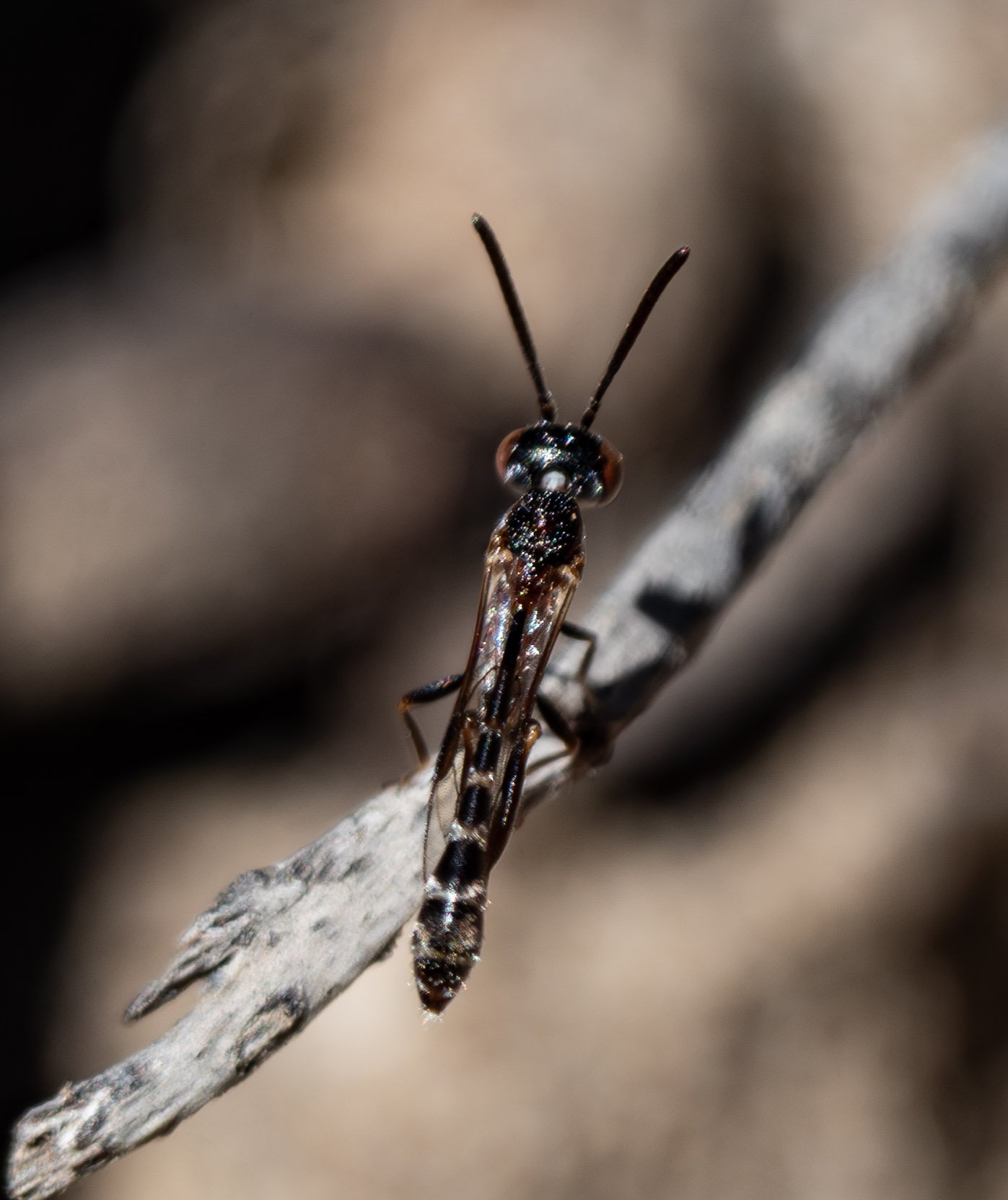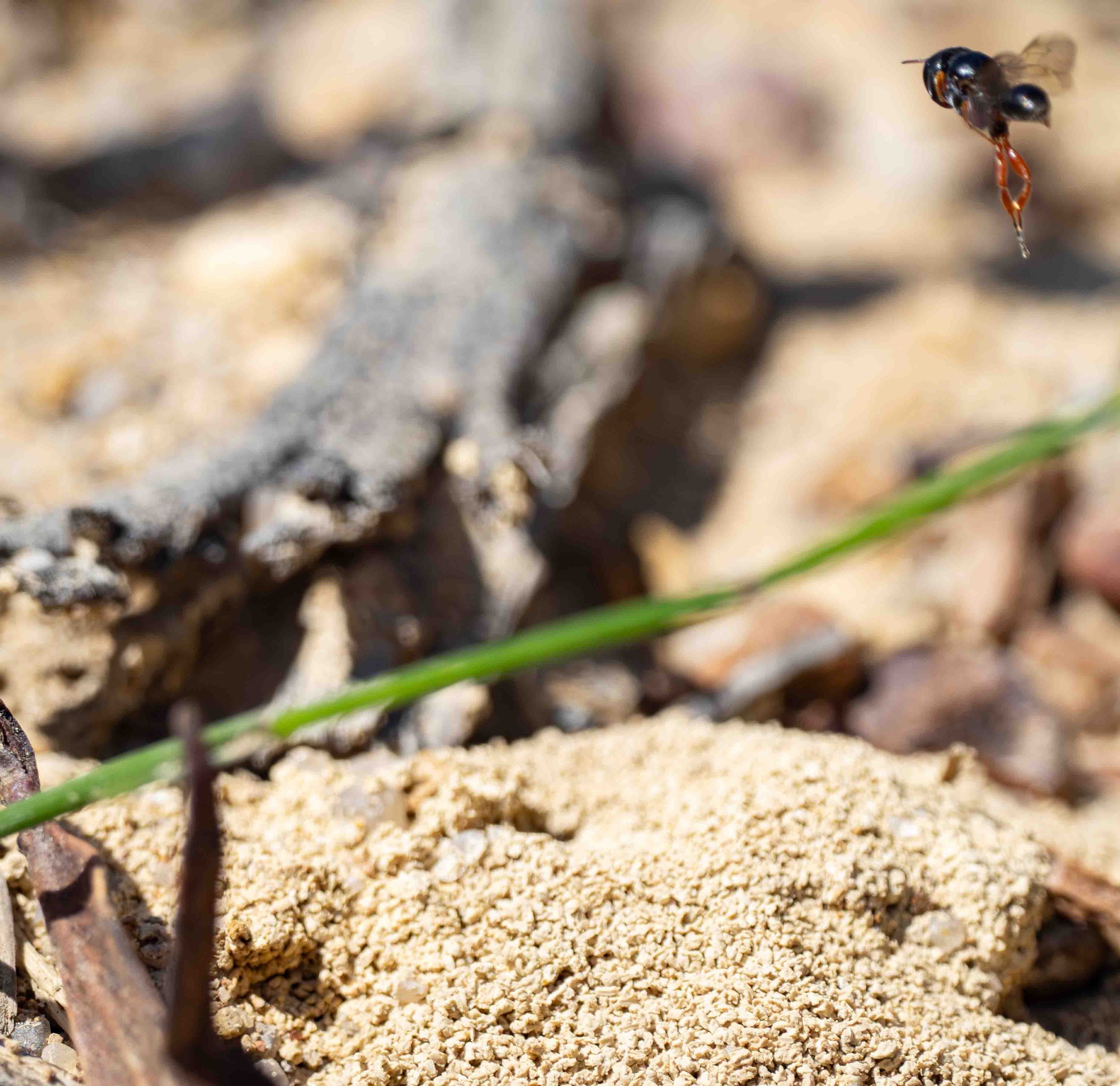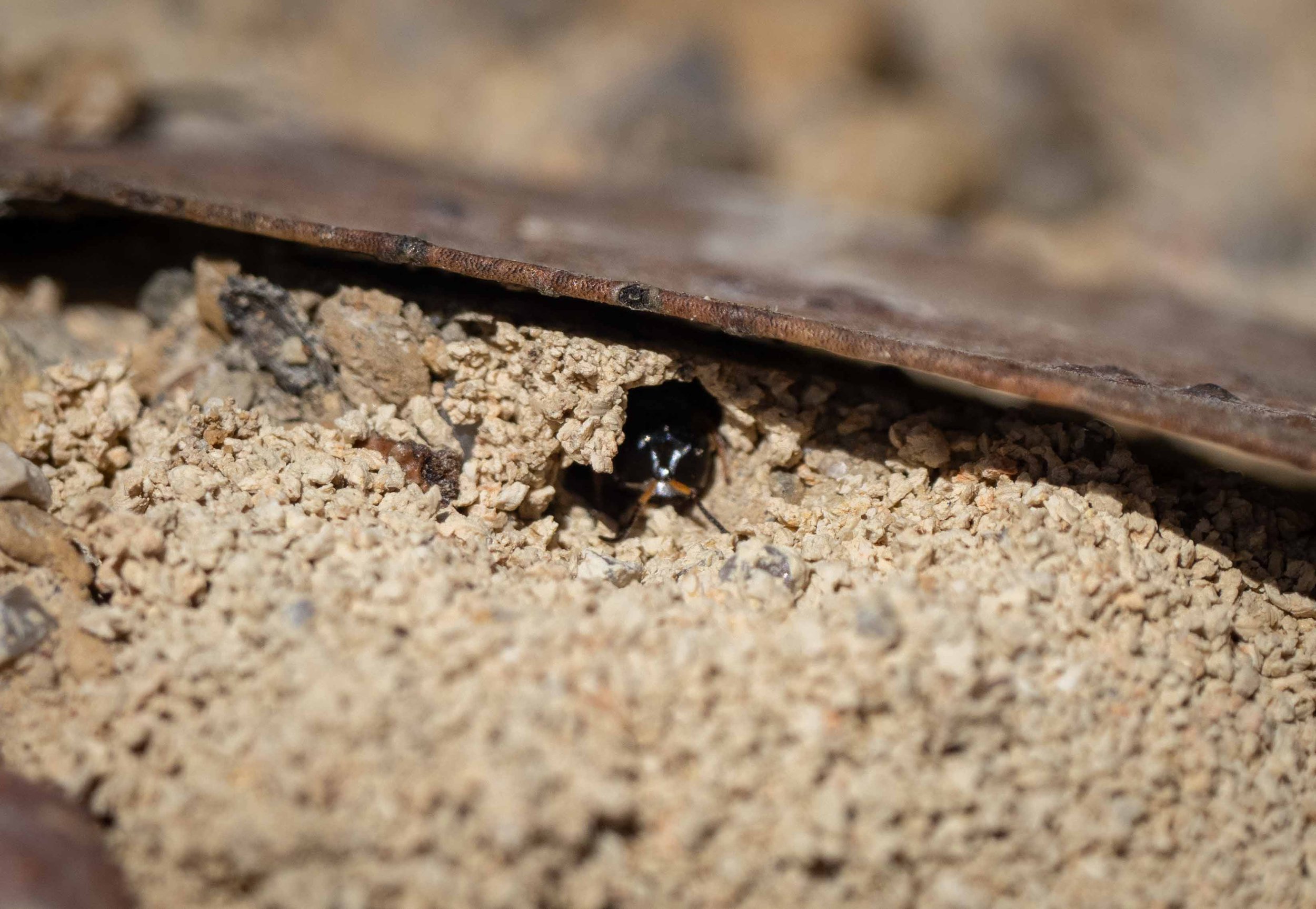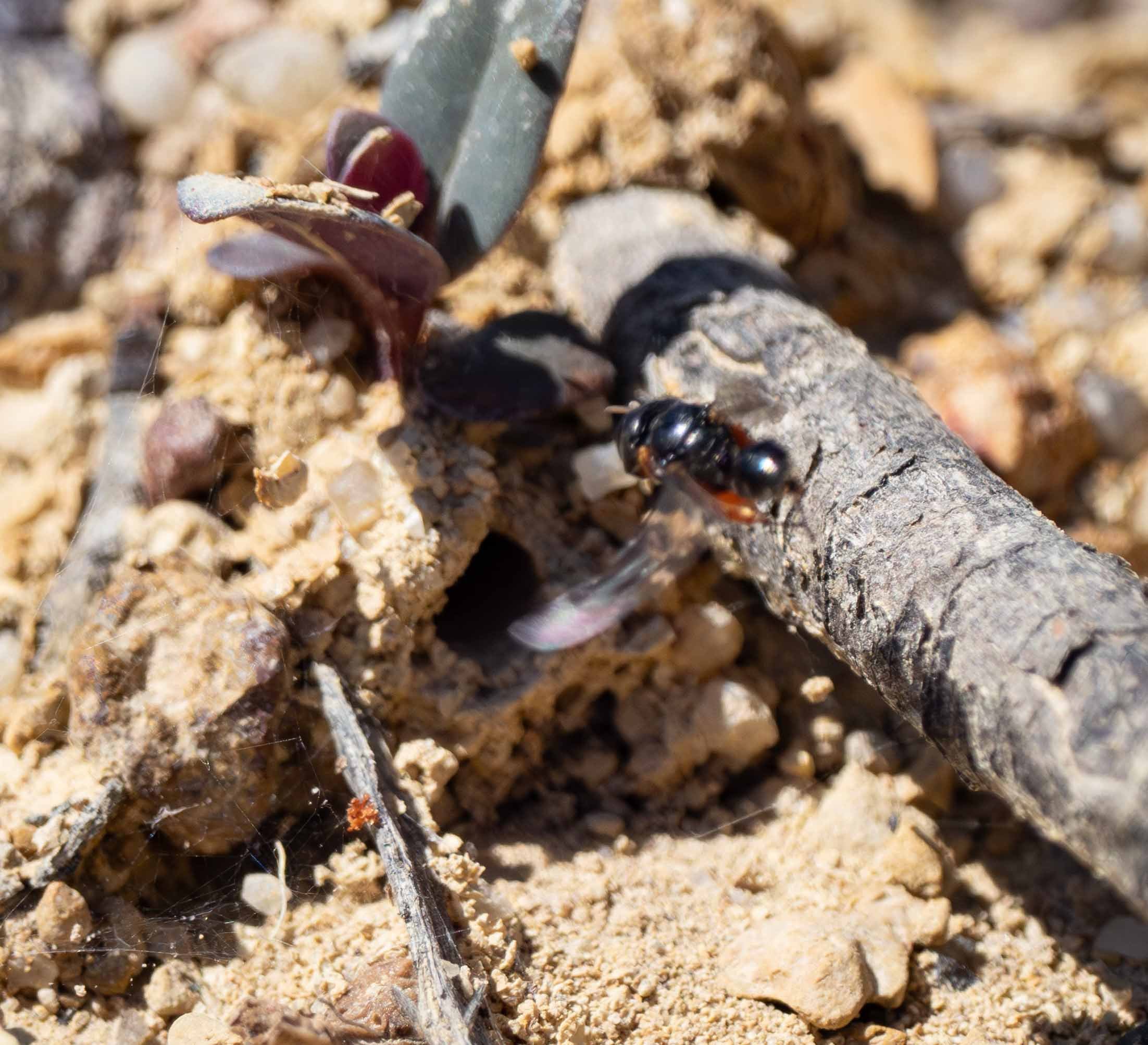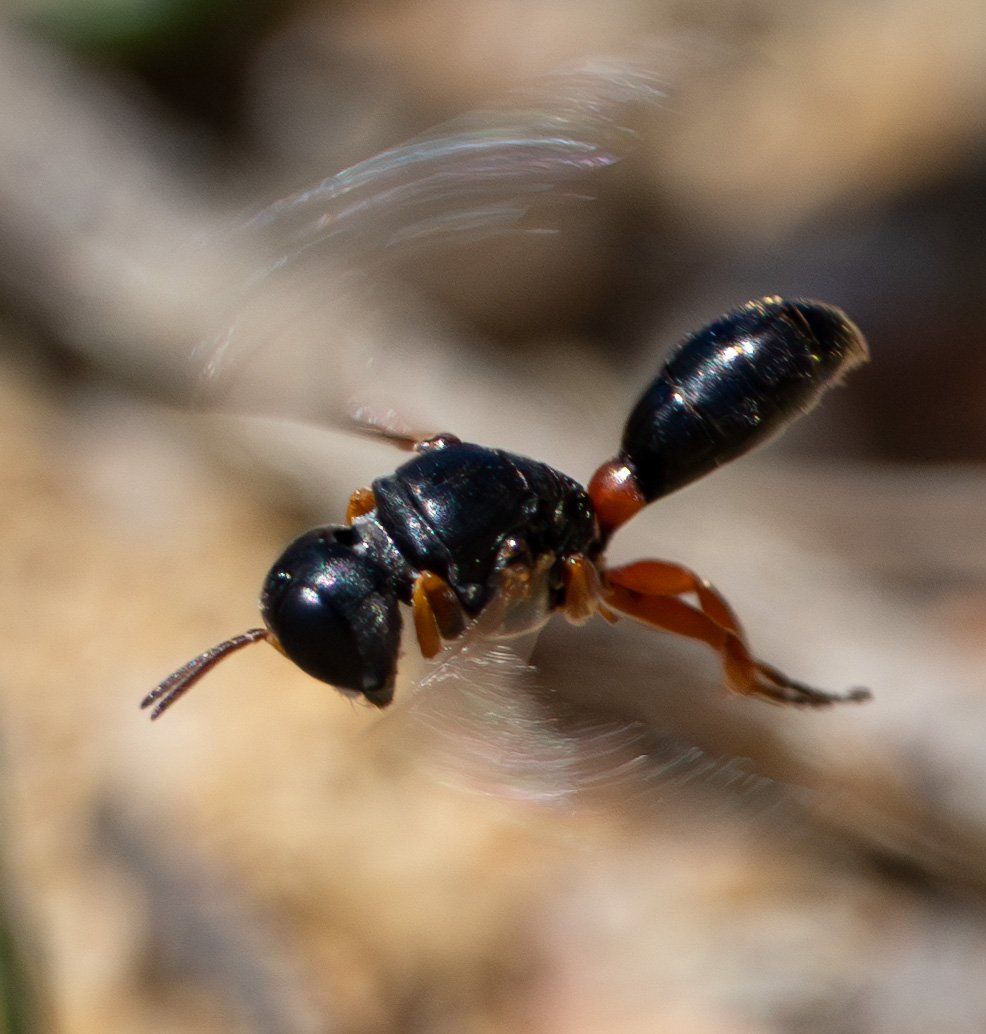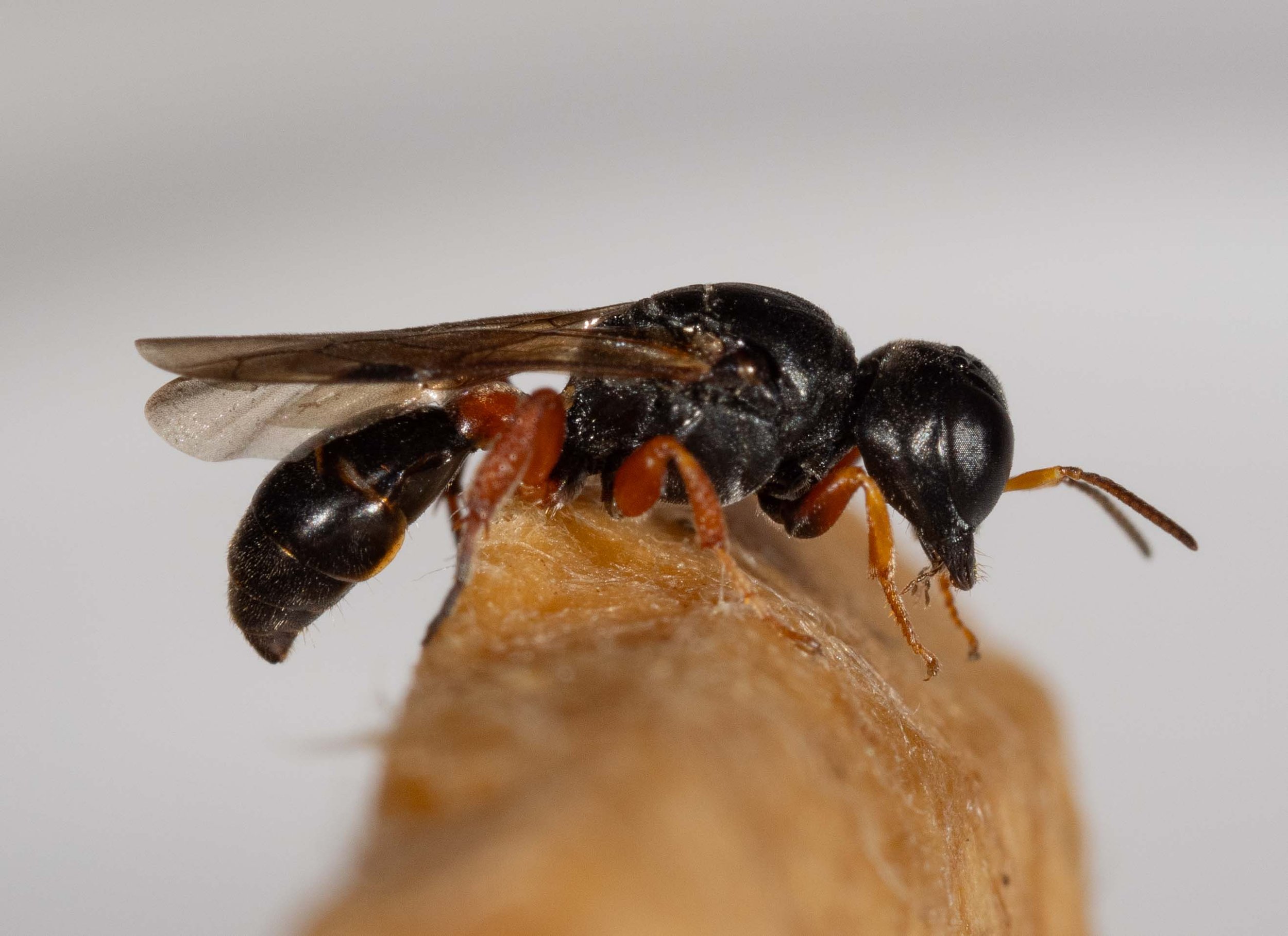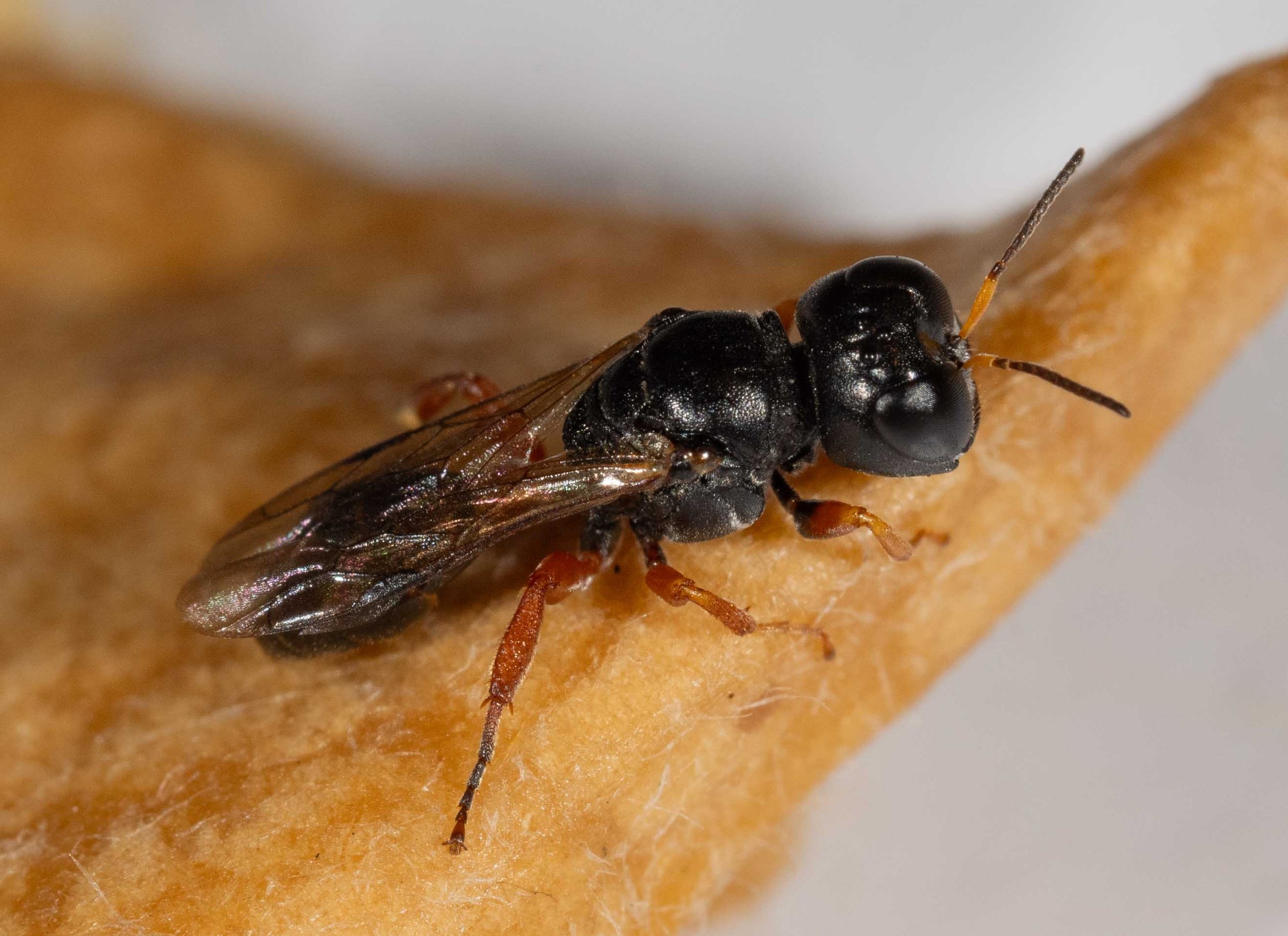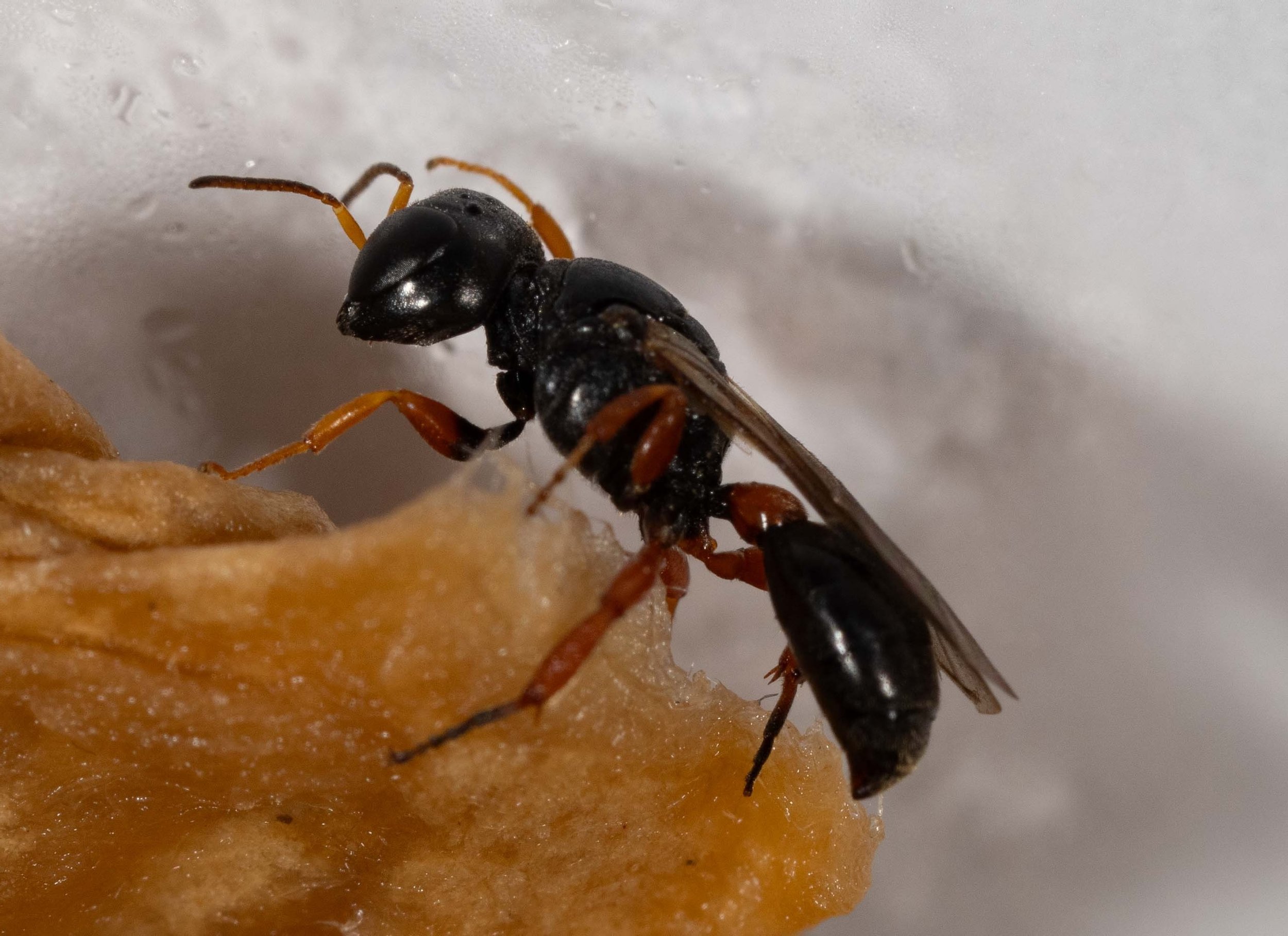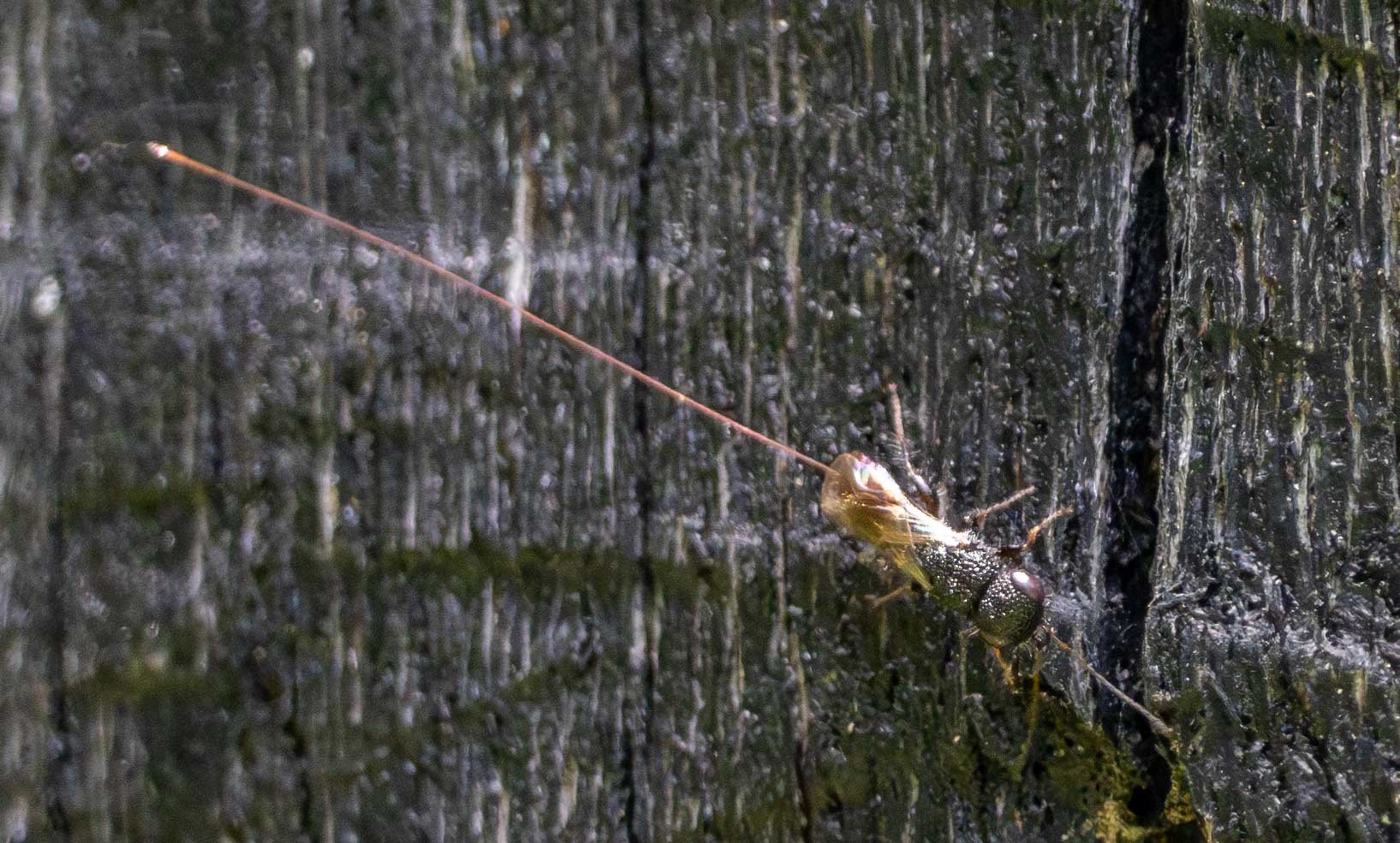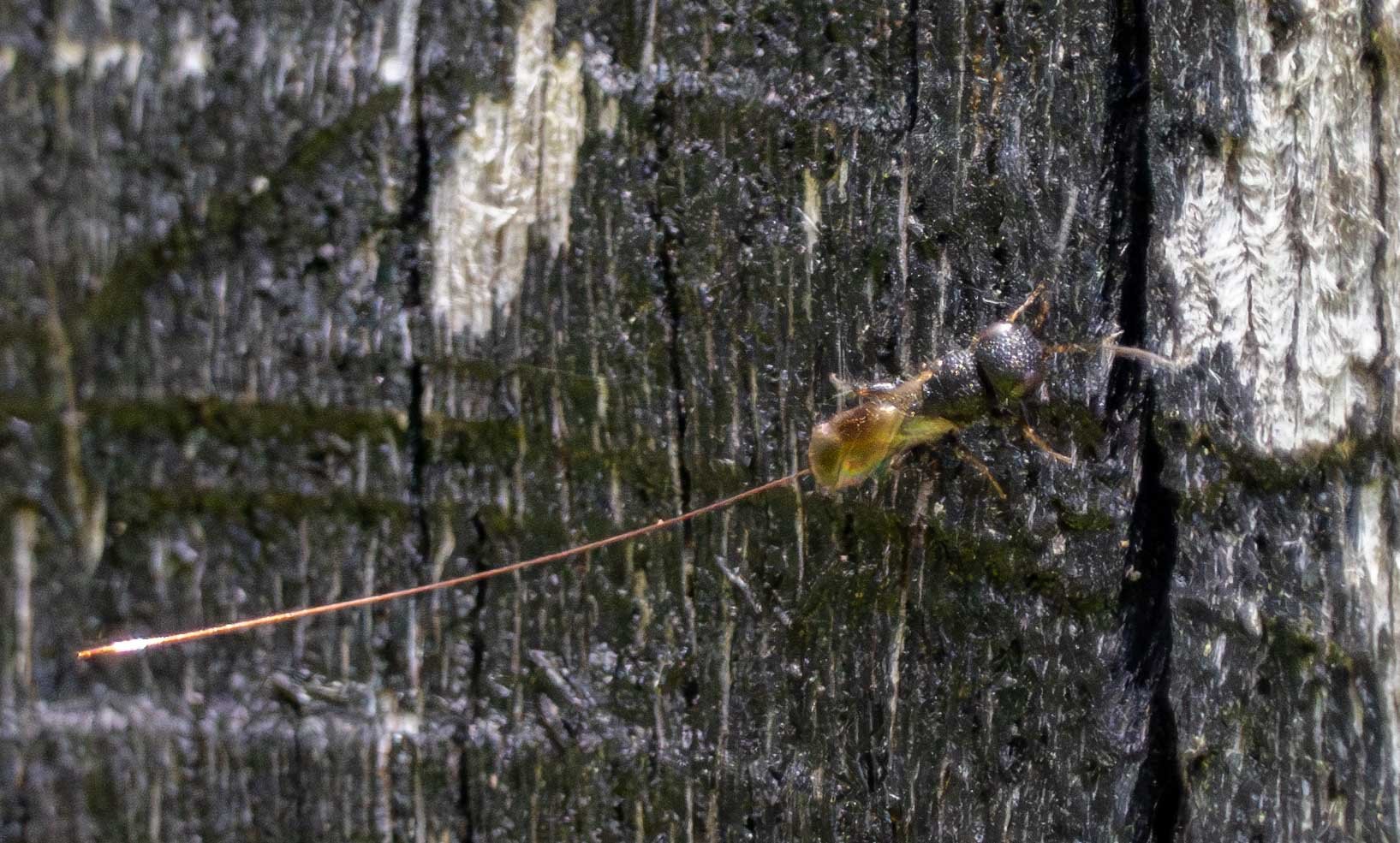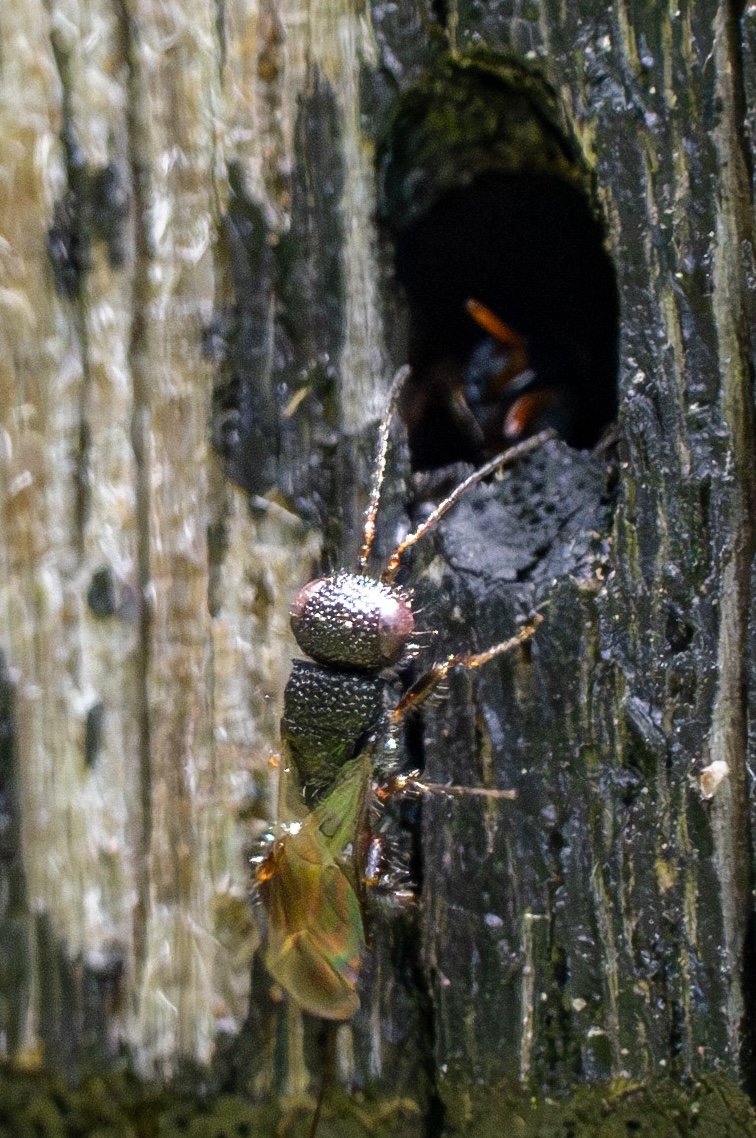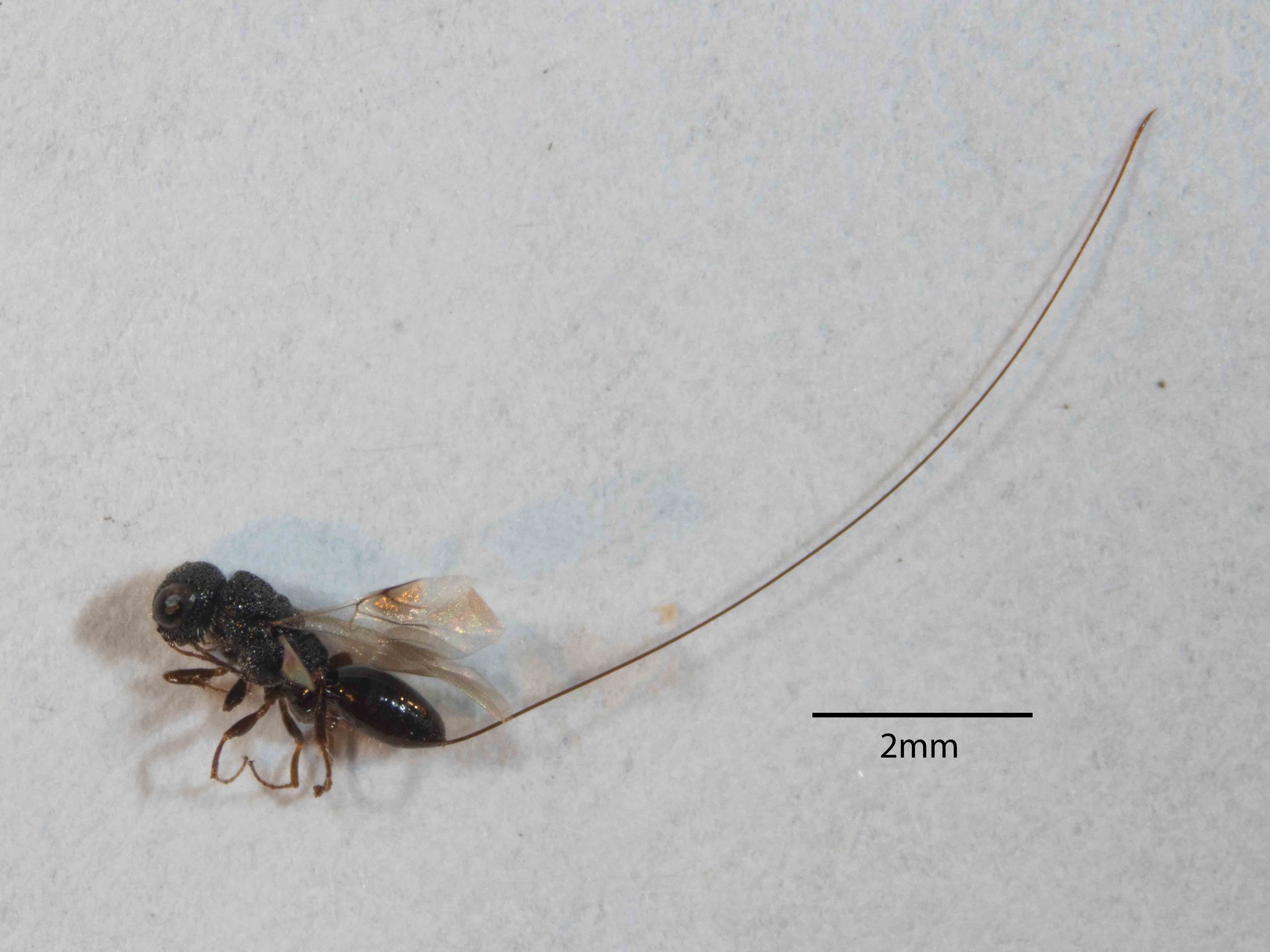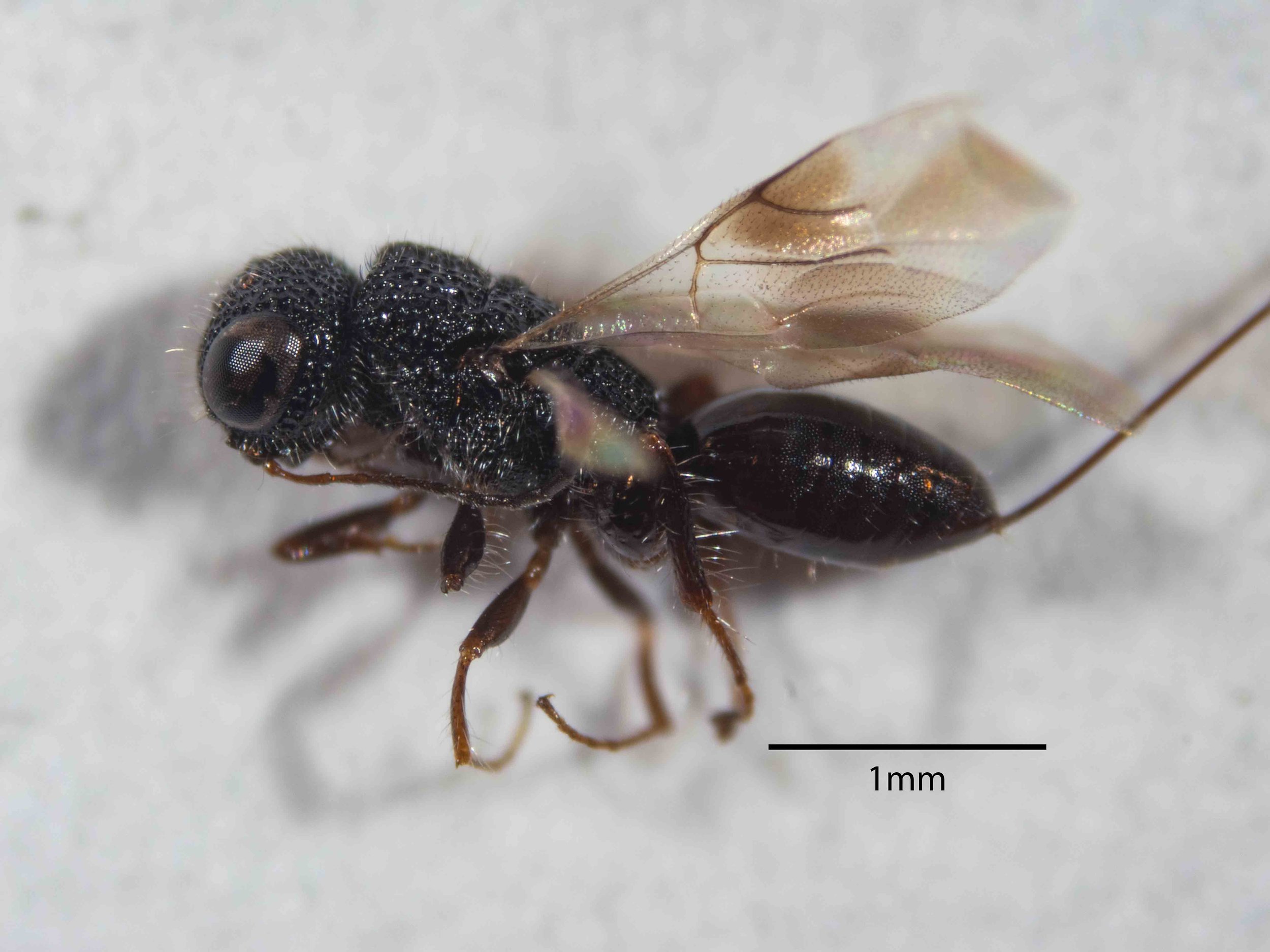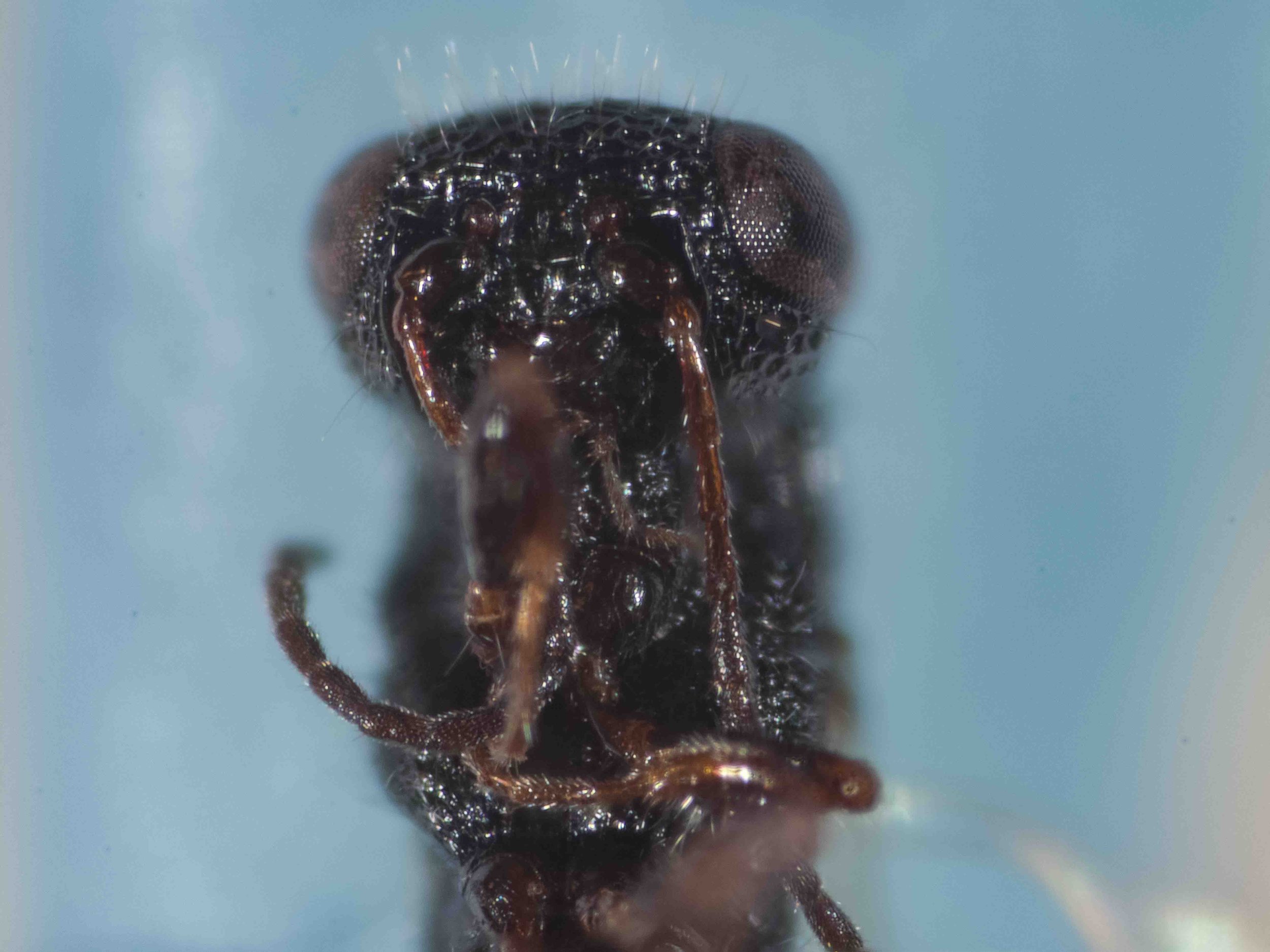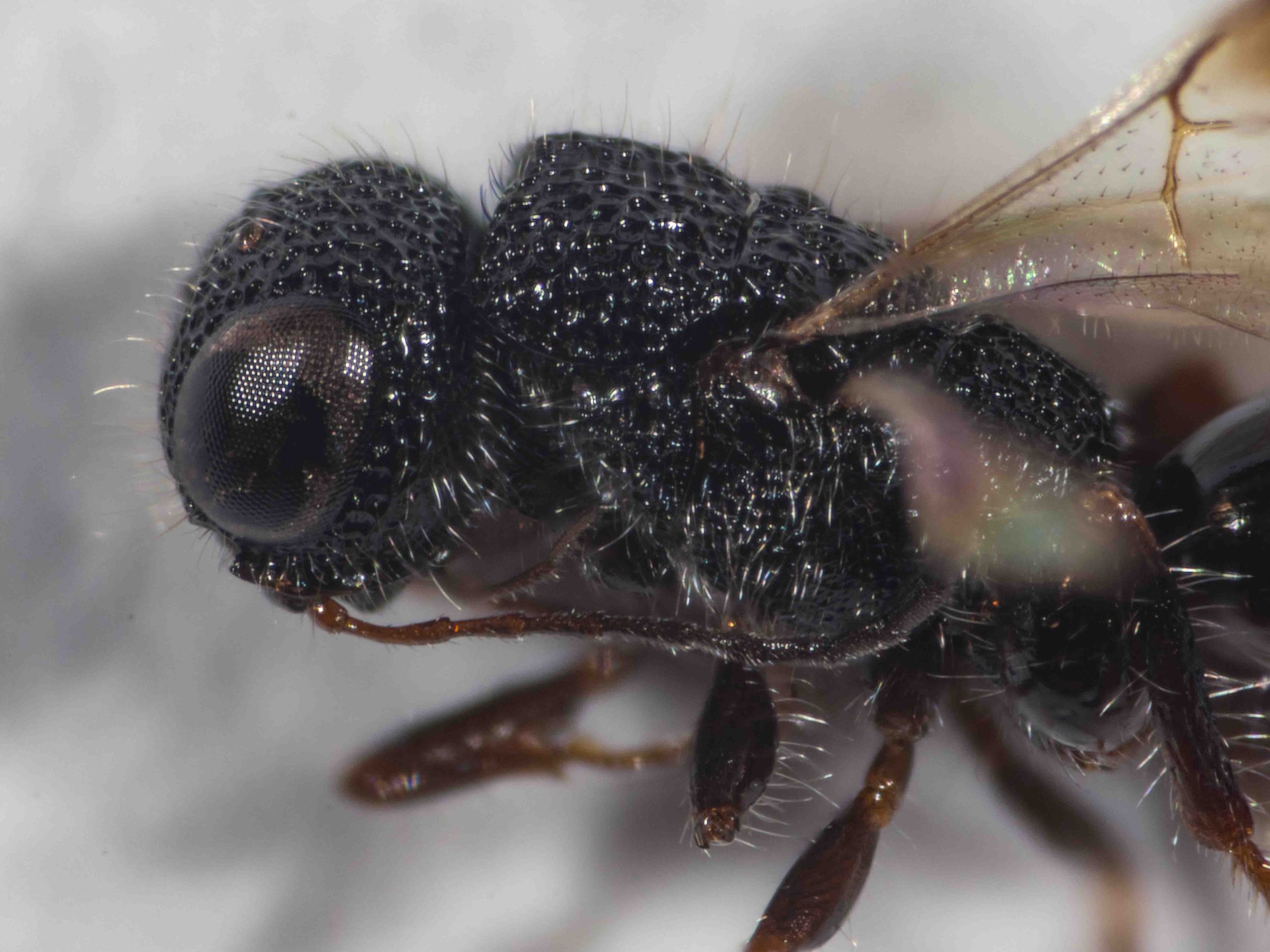New places, new faces
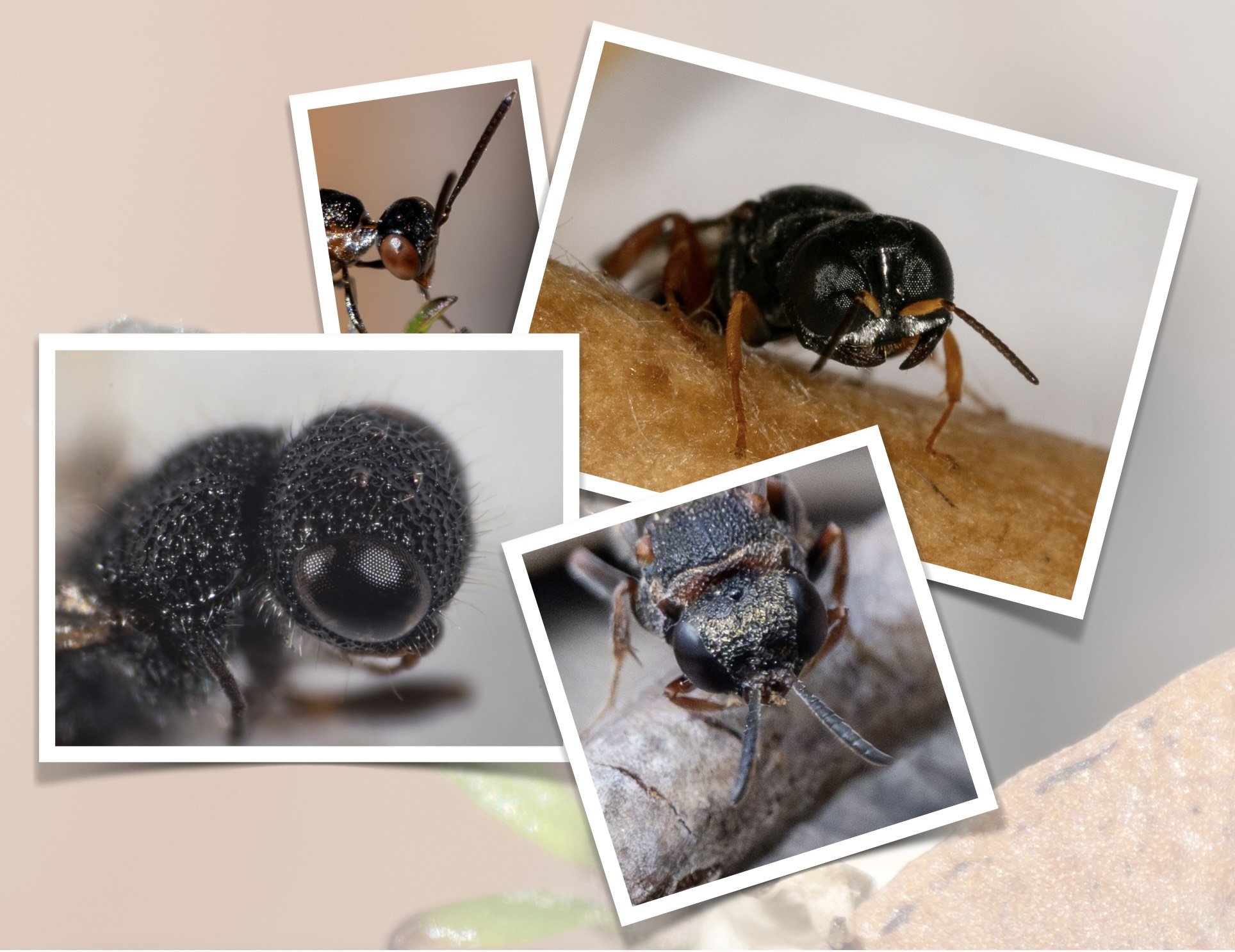
Many of our local wasps and bees are now old friends. Familiar faces.
I’ve spend long hours hanging about their sunny patch of the forest. I know when to expect their seasonal debut, where they live, who their neighbours are, how they spend their days and nights, the challenges they face.
Most are small, but each has a distinctive jizz which helps me recognise them. Size and shape, flying style, favoured perches. It's a strategy well known to birders and it works just as well for wasp twitchers like me.
Making new friends this summer
Lately, however, I've been exploring a bit further afield – and encountering unfamiliar faces.
Indeed the four wasp genera above will be unfamiliar to most in the naturalist community. It's been a privilege to meet them and learn a little more about each.
Here are their stories.
On a shady forest path: Acanthostethus
My traditional haunt in the forest is a sunny, open area with a sandy path running through it. I've previously written about life in that patch ... see Neighbourhood Watch (caution: it’s a rather lengthy tale).
This summer I’ve shifted focus, broadened my horizons.
Several years ago I spotted my first nesting Austrogorytes spryi. The site was near the junction of two of our forest tracks, amongst leaf litter and fallen twigs, and well shaded for much of the day. This summer I've been keeping an eye on the area, hoping to spot Austrogorytes again. And sure enough ...
This species does seem to favour the more shaded parts of the forest. I've never found them nesting in the sunny area used by Austrogorytes bellicosus, for example, despite my rather intensive monitoring of that area.
So on 26th December, having just located the first nesting Austrogortyes, I settled in to watch their comings and goings ... but Austrogortyes’ limelight was quickly stolen by a much smaller crabronid!
A few more days wasp-watching and I’m convinced it’s Acanthostethus. A sand wasp (Bembicinae) like Austrogorytes, but not the same tribe. Indeed, this is the only Australian Nyssonini. Below are a few more snapshots, just for the record. All taken in the same small patch of the forest, around New Year.
Acanthostethus is a genus I've never seen before. Indeed, sightings anywhere are quite rare. There are currently just nine observations of live Acanthostethus on iNaturalist, along with five specimens from malaise traps.
Even before confirming the little wasp's identity, I knew she was up to no good. The jizz told its own story. She was loitering about the entrance to the Austrogorytes’ nests, clearly alert to the owners’ comings and goings. All the manners of a brood parasite. Indeed, her behaviour is remarkably like that of satellite flies around Cerceris nests.
Over the following days, my suspicions were confirmed …
31st December (around 11am)
1st January (again around 11am)
Among Australia's 46 crabronid genera, Acanthostethus is the only such 'brood parasite'.
A novel addition to our home species list!
Biology
Acanthostethus (tribe Nyssonini) are known predator-inquilines (Matthews & Evans 1971; Evans & O'Neill 2007). Their larvae live in the nests of the host, consuming both host larvae and food caches ... although there are few documented cases, the evidence largely circumstantial and based on observations elsewhere of the related genus Nysson (Evans & O'Neill 2007). Two studies in Victoria reported Acanthostethus parasitic on the crabronid Sericophorus (tribe Miscophini) (Rayment 1953; Matthews & Evans 1971), and I can find no published reports since.
So this may be the first documented case of Austrogortyes as a host for Acanthostethus. However, it would be no great surprise to anyone in the know. Several species of Nysson in the northern hemisphere are known to specifically target wasps in the tribe Bembicini –including the gorytine wasp Argogorytes (Evans 1966; Evans & O'Neill 2007).
OK, my case for adding Austrogortyes as a host remains circumstantial, but I reckon it's pretty convincing. The little wasps are clearly tracking the returning ‘hosts’, and are repeatedly entering the burrows. And they appear to be targeting Austrogorytes quite specifically. There are Sphodrotes nesting nearby, but so far the Acanthostethus seem to be ignoring them. I'll keep watching.
Yet another new face … and another predator-inquiline
Before I leave the shady path, let me introduce another new face I met there. Tiny and slender. Hovering about the nesting area in slow, looping flight. Present day after day. Poking about under the leaf litter.
It turns out this is yet another genus we'd not recorded here previously!
Biology
She's a known predator-inquiline too ... just like Acanthostethus. Host records for Pseudofoenus are few, but most studies suggest that these wasps target ground-nesting bees (Jennings & Austin 2002, 2004; Parslow & Jennings 2020). There are certainly bees nesting nearby, so maybe that’s what she was searching for. Or maybe this Pseudofoenus species also has an interest in Austrogorytes! It's possible. In a recent study in Western Australia, Pseudofoenus were frequently observed hovering close to the active nests of Podagritus (a crabronid wasp), and sometimes even made brief sorties into the burrows (Houston & Stuart 2023).
In a roadside ditch: Pseudoturneria
There's a nearby gravel road that I walk regularly. The verges are exposed, largely cleared of vegetation, roadworks creating a drainage ditch of gravel and rocky clay. Not a particularly attractive or natural habitat ... but on sunny days during spring and early summer I was frequently seeing small wasps circling in bobbing flight, long legs dangling.
Based on their jizz and small size, I suspected Rhopalum (tribe Crabronini). I even wondered if they were the species we have nesting at home, although the timing was wrong (Rhopalum coriolum nest in late winter and I've never seen one in flight later than mid spring).
So last month I decided to take a closer look. After a couple of trips, once with camera and once with net, I had all the information I needed to make a positive species ID.
Pseudoturneria is yet another crabronid genus that I've not seen before ... and again, sightings anywhere are rare. It was not even listed on the iNaturalist taxonomy and I've yet to find any other images of the wasps, living or dead.
I was initially fooled by the jizz – in flight, they look so much like Rhopalum! It turns out this shouldn't be such a surprise. Pseudoturneria is very closely related to Rhopalum (Bennett 2010; Leclercq 1998), which in itself is widely acknowledged as polyphyletic and in need of revision (Bohart & Menke 1976; Leclercq 1997; Bennett 2010).
Biology unknown
The habits of Pseudoturneria are largely undocumented. A review in 2010 assumed the genus to be a ground nester and to prey on flies (Bennett 2010), but this was based solely on the close phylogenetic relationship to Rhopalum and Podagritus. I've yet to find any direct reports of field observations.
Now I can confirm that, for this species at least, Pseudoturneria is indeed a ground-nester. Do the females stock their nests with flies? Perhaps next summer I will spend some more time crouched in the roadside dirt, and find out.
Alongside a tropical rainforest: Megalyra
Whenever we venture beyond our home forest I remain on alert for wasps, and other insects too. Yes, it's a an obsession … and my favourite form of tourism. Most species I see are likely to be unfamiliar, particularly when we travel far afield and into different environments.
Early December found us on the north coast of NSW, surrounded by subtropical rainforest and mixed riverside vegetation types. Rich soil, warm climate ... nothing like our home ecosystem in the south of the state.
It was the long, gleaming ovipositor of this tiny wasp that caught my eye. And I knew immediately what a special moment this was! Megalyra are not often seen, and records for small species like this are rare indeed!
Should I collect her? Could I?
Yes on both counts. Megalyra specimens are so few in museum collections that I'm confident she will prove valuable to researchers one day. And I managed to safely contain her, undamaged, for later observation close-up.
Megalyridae are so unusual that they belong to their own superfamily, only very distantly related to the Crabronidae that are my current passion. As luck would have it, I was recently introduced to the genus when I found some males at home (see ‘Firewood & mystery wasps’). This was my first female, however ... and one of the classic 'long-tailed' species too!
Megalyra lilliputiana is indeed rare in collection. The most recent published study of the genus reviewed all holdings of 26 museums around the world ... and discovered just nine females and a single male of this species (Shaw 1990). So I'm sure this little one will be a welcome addition to an Australian museum collection. I’ll lodge her very soon.
Biology unknown
Megalyra are parasitic wasps. Their hosts are concealed, wood-dwelling larvae.
That one sentence pretty much sums up all that is known about these mysterious insects. Biological information is available for only a few species (Vilhemsen et al. 2010)... mostly the large, widespread and (relatively) common Megalyra fascipennis (Mesaglio & Shaw 2022) that parasitises wood-boring beetle larvae.
However, different Megalyra species may well target quite different hosts, including wood-nesting wasps or bees (Naumann 1987). So perhaps that little face in the fence post was quite right to be concerned!
Behind the scenes
Anyone following our blogs via our home page or email newsletters could be excused for thinking we’ve been a bit inactive of late … at least in terms of our nature pursuits. Nothing could be further from the truth.
For many months now, Paul and I have both been intently working on our separate biology projects. And quite coincidentally, it’s hymenoptera from top to bottom.
For Paul, it’s sawflies … sifting through the published descriptions of Australia’s species in an attempt to distinguish adults at the subfamily, genus and ultimately species level. He has been developing resources to support the efforts of naturalists identify adult sawflies from field photos. And these are already proving their worth, with many iNaturalist users taking advantage of the matrices and step-by-step guides to identification.
My own focus has been on the crabronids … with the occasional diversion, sparked by a chance discovery or sighting. I’m gradually building my knowledge of the various Australian genera, and drilling down to species level where possible. It’s an ongoing project. It seems every week I discover something new. Life is never dull. Making my first ever sightings of two crabronid genera this summer – Pseudoturneria and Acanthostethus –has been a special thrill! There's no better way to become familiar with a taxon than a direct encounter.
Our various notes, resources, and collected references are documented in a section of the website we call ‘workbook notes’. And with the proliferation of these pages, there was a need to make navigation a bit easier … for us, as well as anyone else interested in such things.
We stress that these pages are akin to laboratory or field notebooks – neither perfect nor necessarily complete. They are largely for our own use, but we happily make them available to others.
References
Bennett, D.J. 2010. Phylogenetics of Crabronini, with a consideration of the evolution of predatory and nesting behaviours (Insect: Hymenoptera: Crabronidae). PhD thesis, University of Kansas.
Bohart, R.M. & Menke, A.S. 1976. Sphecid Wasps of the World: a Generic Revision. University of California Press, Berkeley.
Evans, H.E. 1966. The Comparative Ethology and Evolution of the Sand Wasps. Harvard University Press. Cambridge, Massachussetts
Evans, H.E. & O'Neill, K.M. 2007. The Sand Wasps: Natural History and Behavior. Harvard University Press. Cambridge, Massachussetts
Houston, T. F. & Stuart, K. 2023. Natural history of two hunting wassp, genus Podagritus Spinola (Hymenoptera: Crabronidae, Crabronini), outstanding in their tribe for preying on native bees. Australian Entomologist, 50(2) 131-143
Jennings, J.T. & Austin, A.D. 2002. Systematics and distribution of world hyptiogastrine wasps (Hymenoptera: Gasteruptiidae). Invertebrate Systematics, 16 735-811
Jennings, J.T. & Austin, A.D. 2004. Biology and host relationships of aulacid and gasteruptiid wasps (Hymenoptera: Evanioidea): a review. Perspectives on Biosystematics and Biodiversity. March 2004. 187-215
Leclercq, J. 1997. Hyménoptères Sphécides Crabroniens d'Australie, du genre Rhopalum Stephens, 1829. Notes Fauniques de Gembloux, 32: 3-101
Leclercq, J. 1998. Hyménoptères Sphécides Crabroniens d'Australie du genre Pseudoturneria Leclercq, 1954. Lambillionea, Revue Internationale d'Entomologie 98: 299-303
Matthews, R.W. & Evans, H.E. 1971. Biological notes on two species of Sericophorus from Australia (Hymenoptera: Sphecidae). Psyche 77(4) 413-429
Mesaglio, T. & Shaw, S.R. 2022. Observations of oviposition behaviour in the long-tailed wasp Megalyra fasciipennis Westwood, 1832 (Hymenoptera: Megalyridae). Austral Ecology, 47(4): 889-893
Rayment, T. 1953. New bees and wasps — Part XXI. Parasites on sericophorine wasps. Victorian Naturalist 70: 123-127
Shaw, S.R. 1990. A taxonomic revision of the long-tailed wasps of the genus Megalyra Westwood (Hymenoptera: Megalyridae). Invertebrate Taxonomy 3: 1005-1052
Vilhemsen, L., Perrichot, V., & Shaw, S.R. 2010. Past and present diversity and distribution in the parasitic wasp family Megalyridae (Hymenoptera). Systematic Entomology, 35: 658-677
